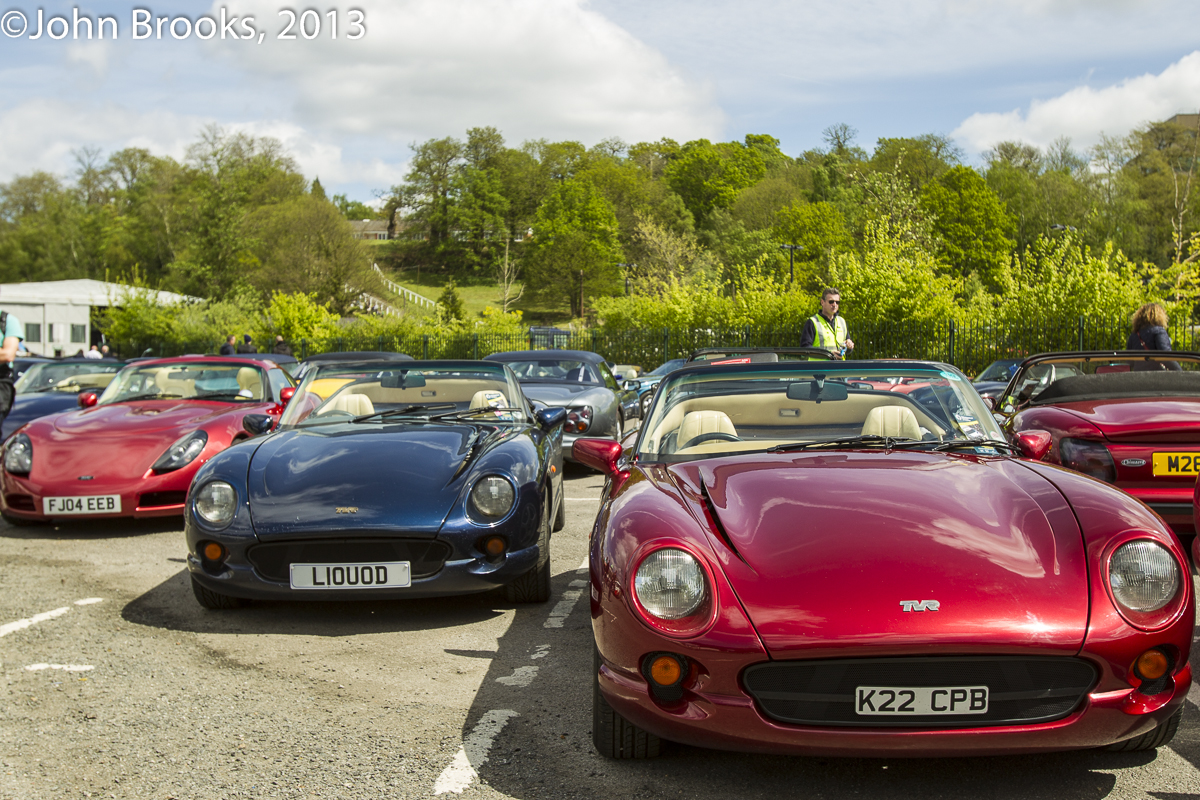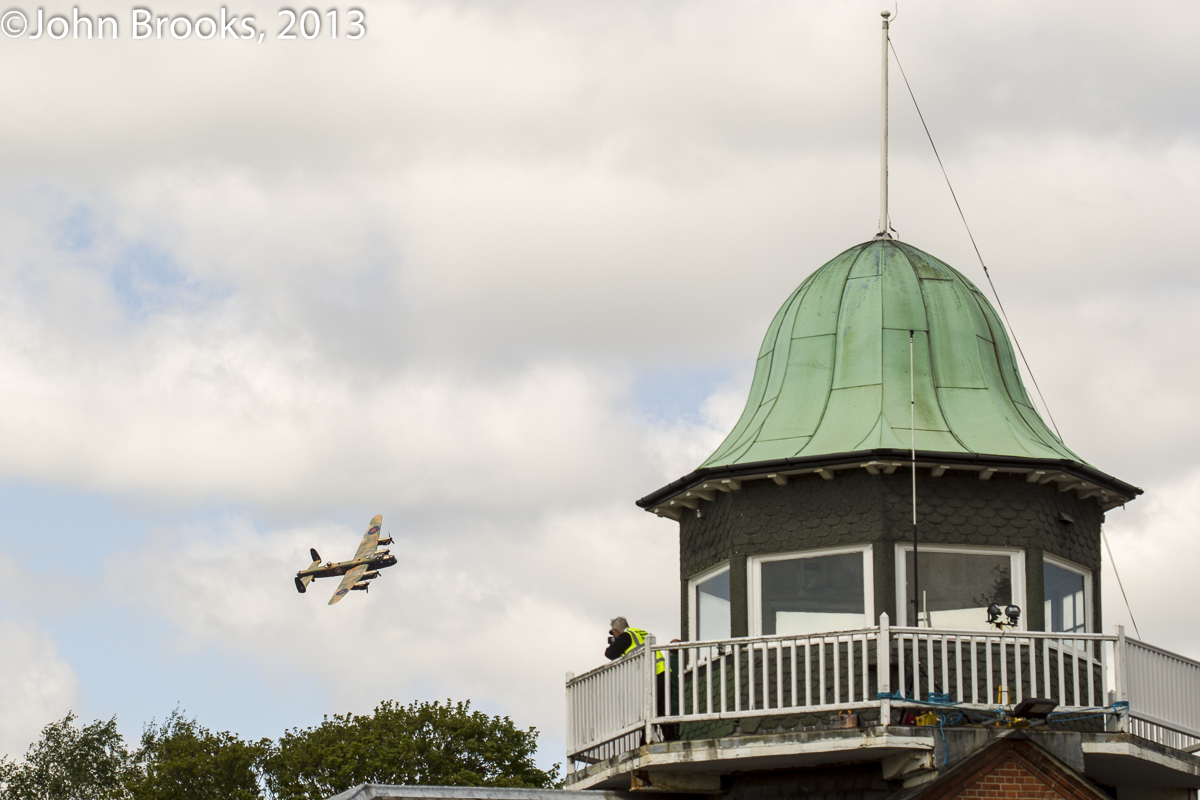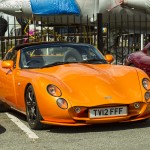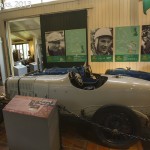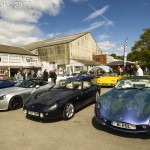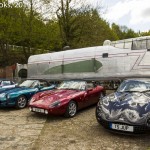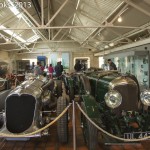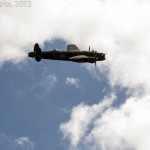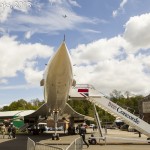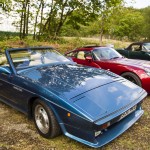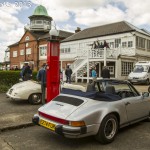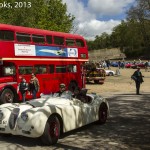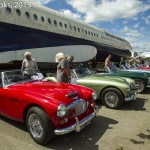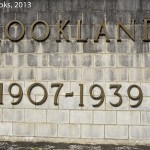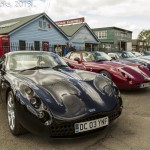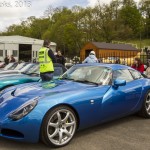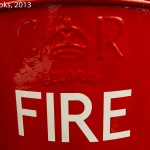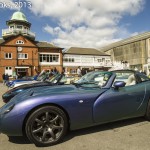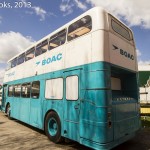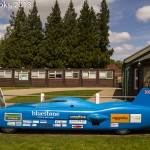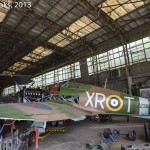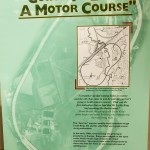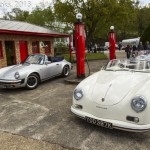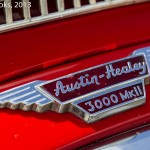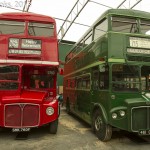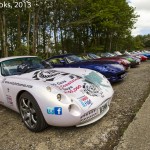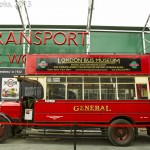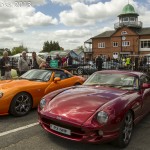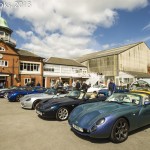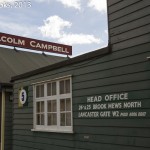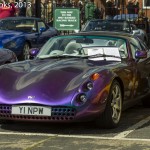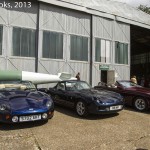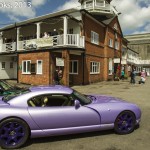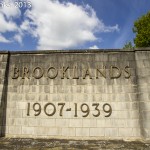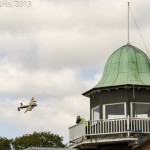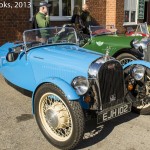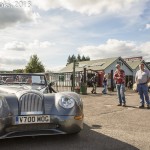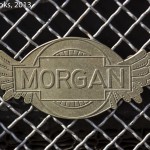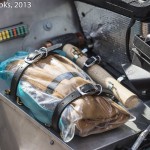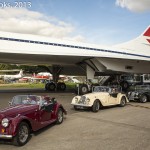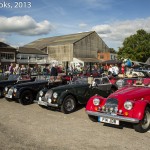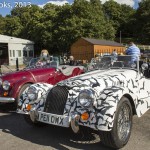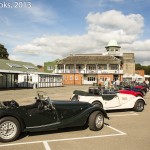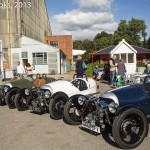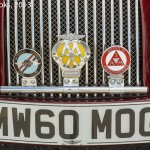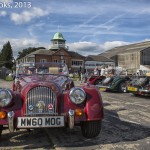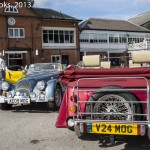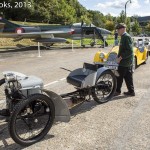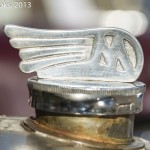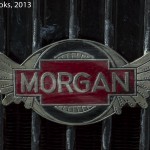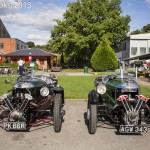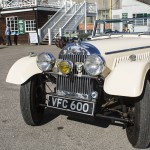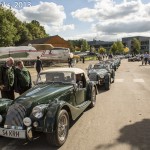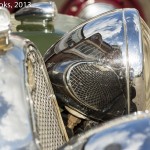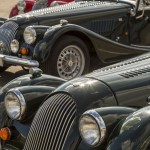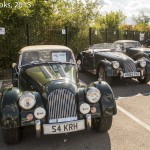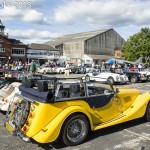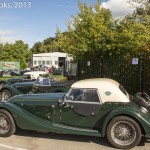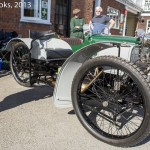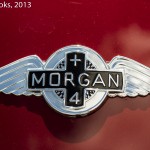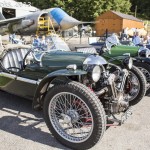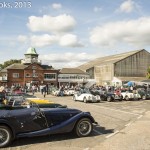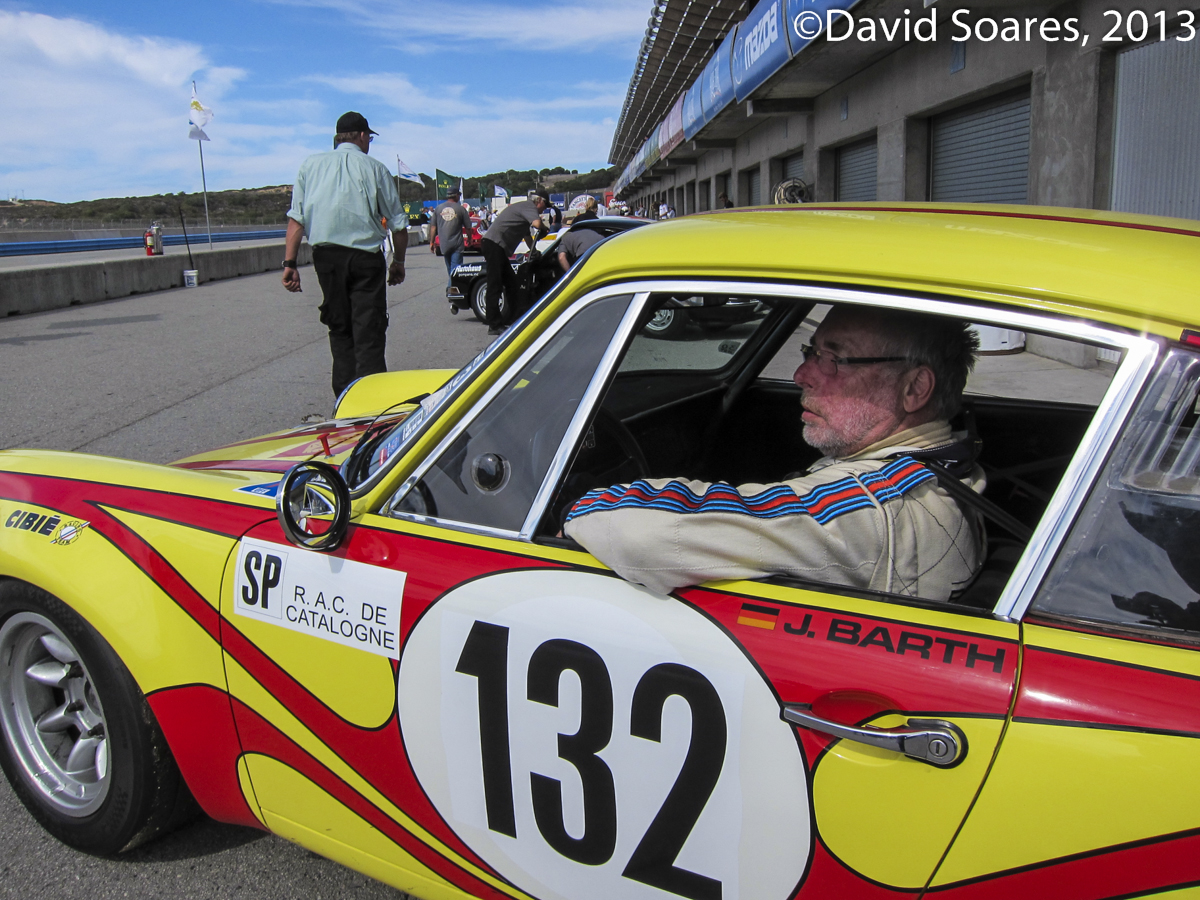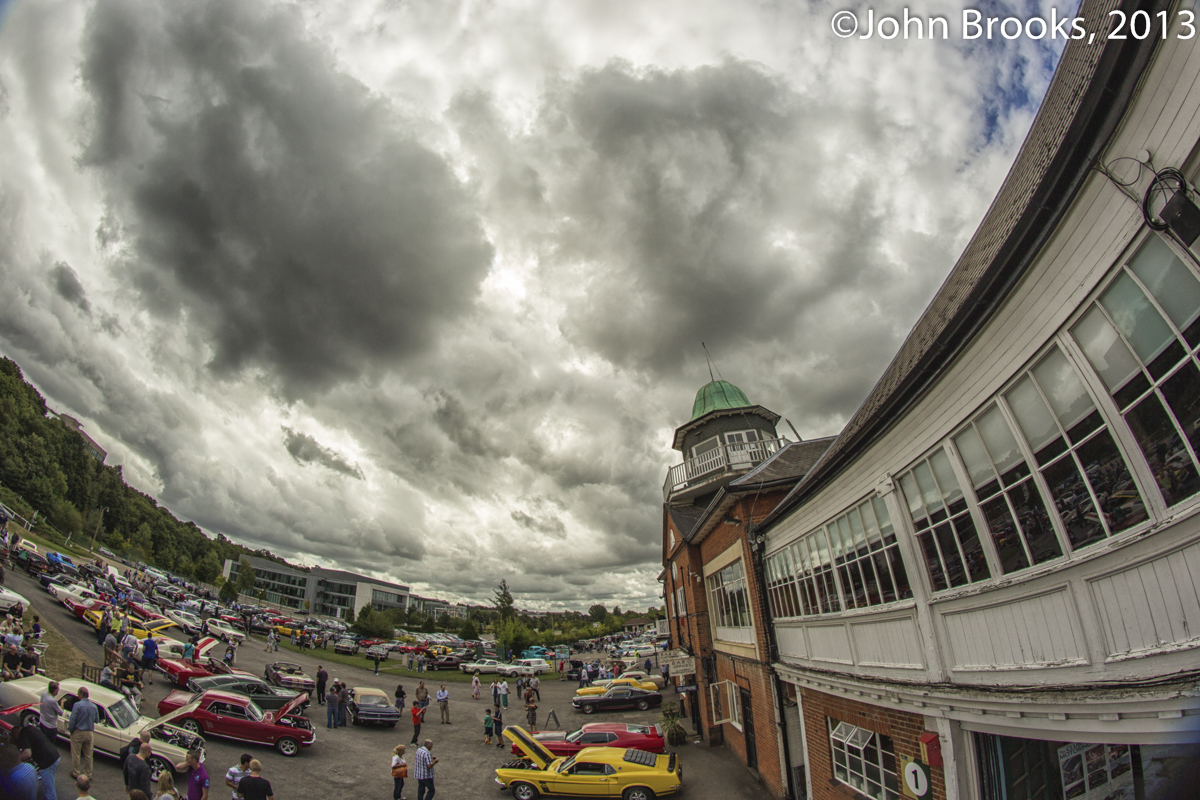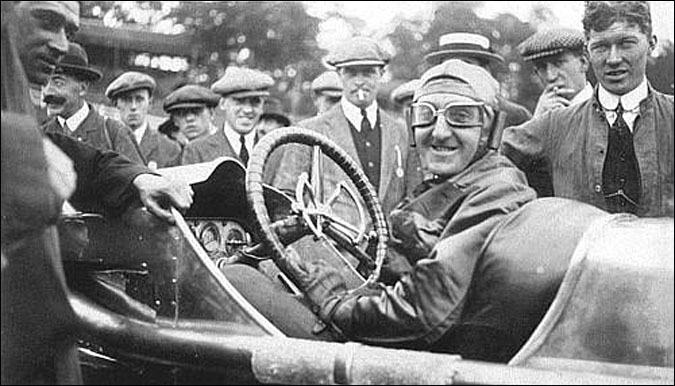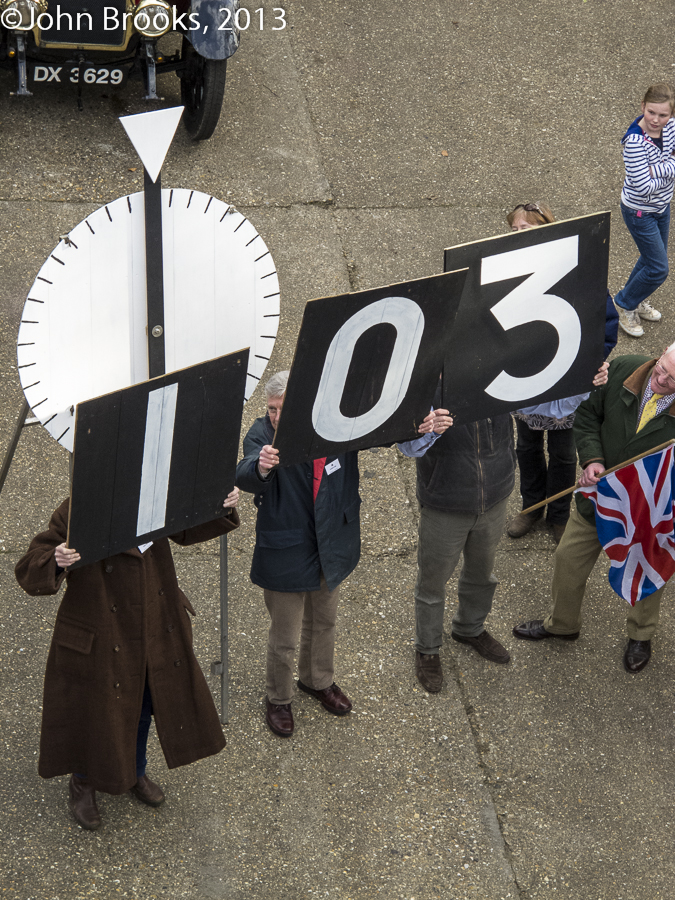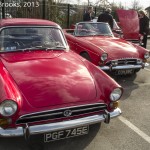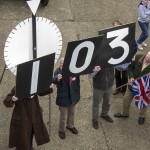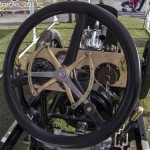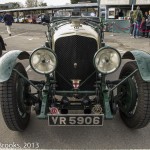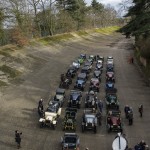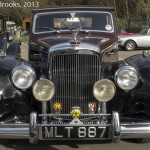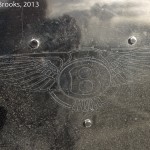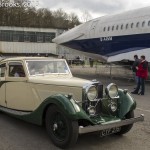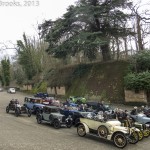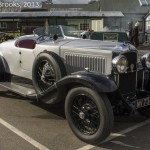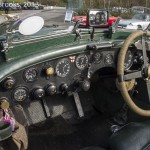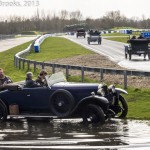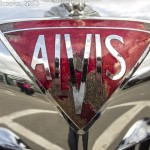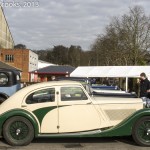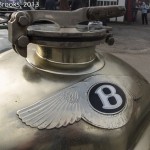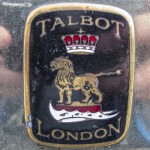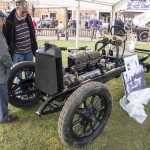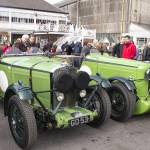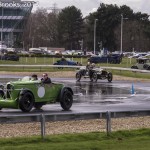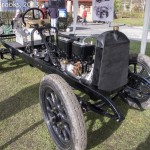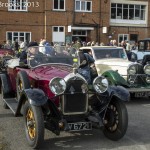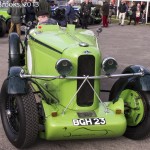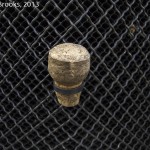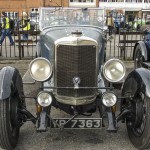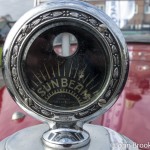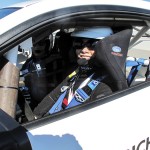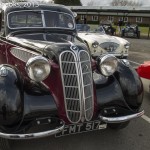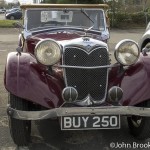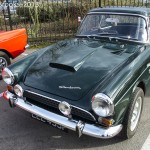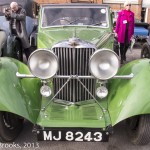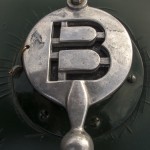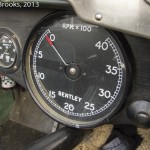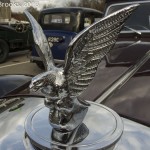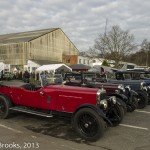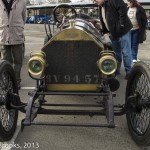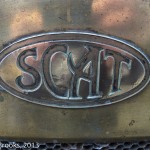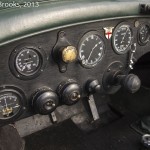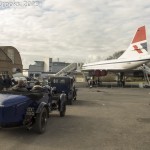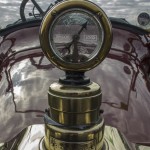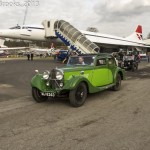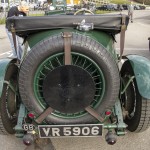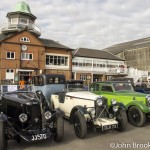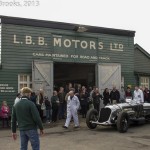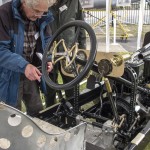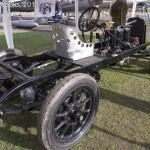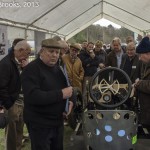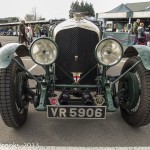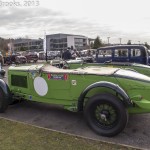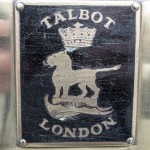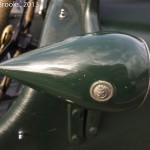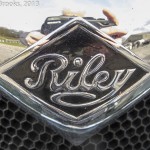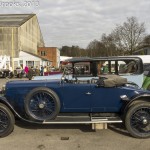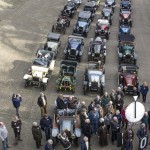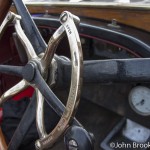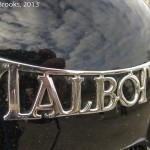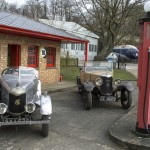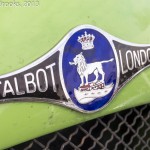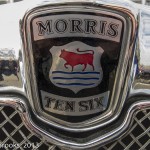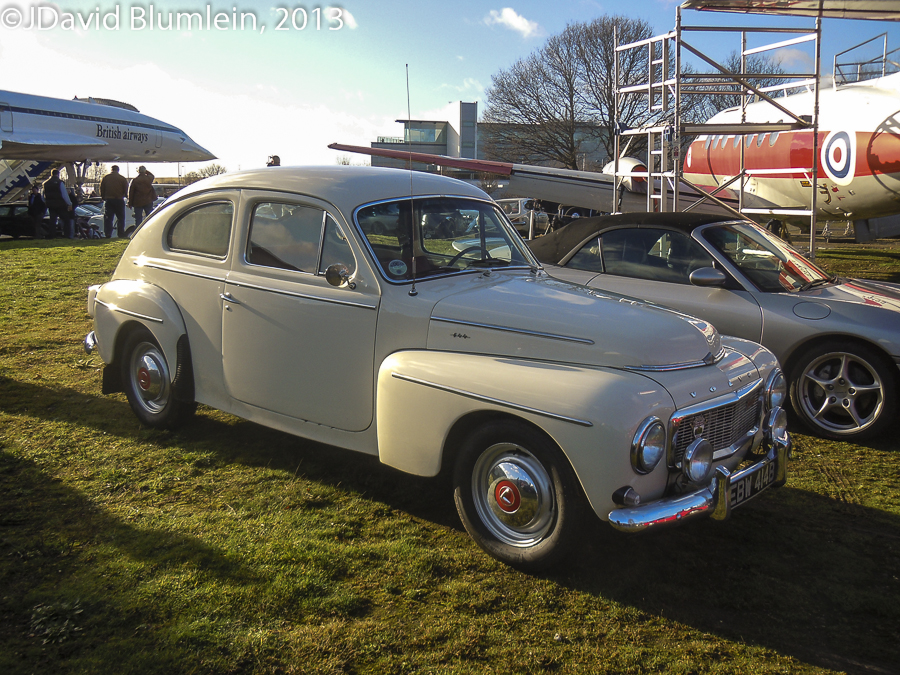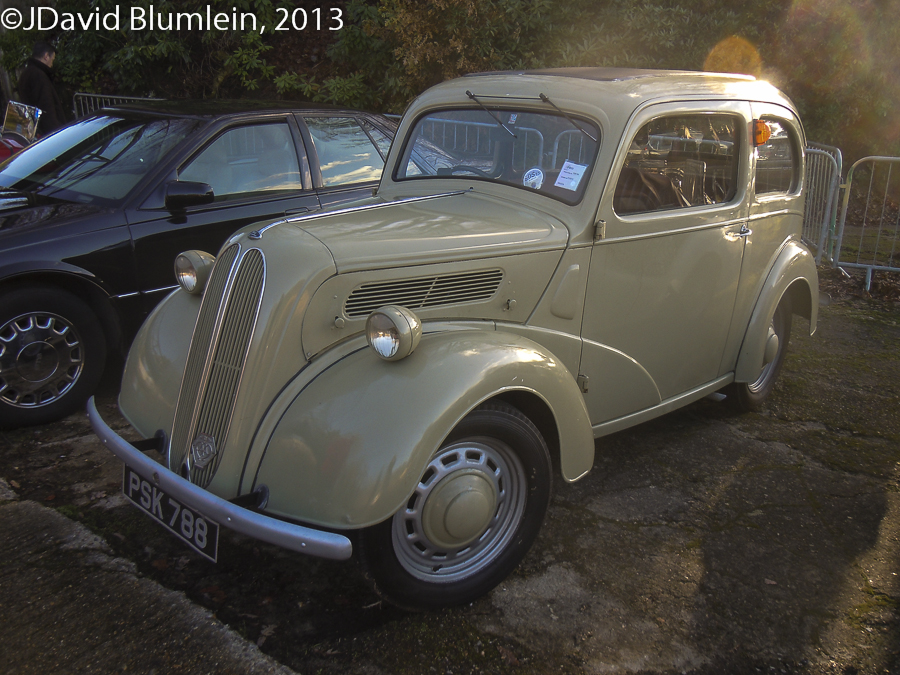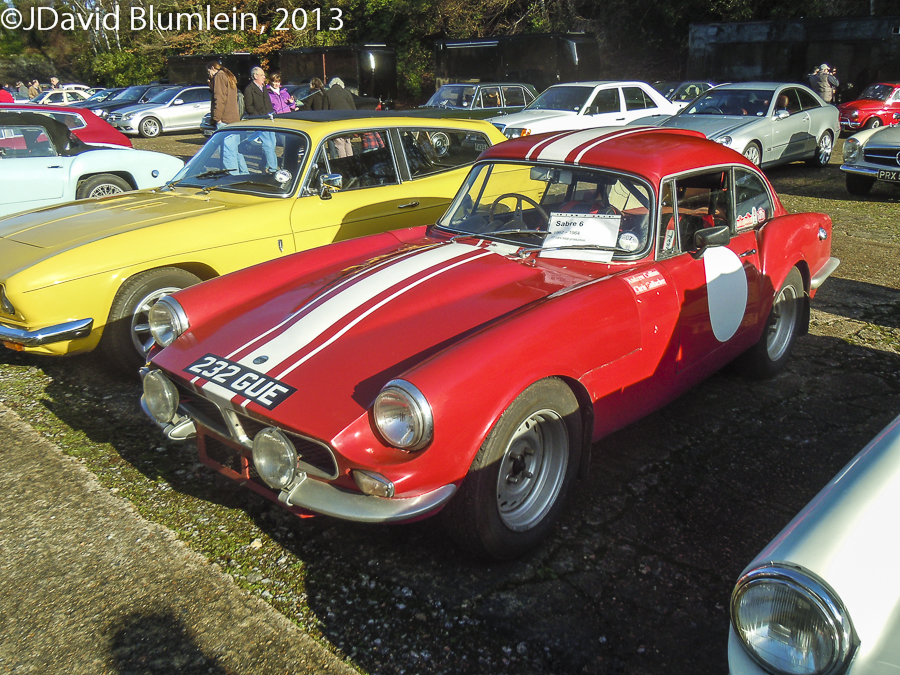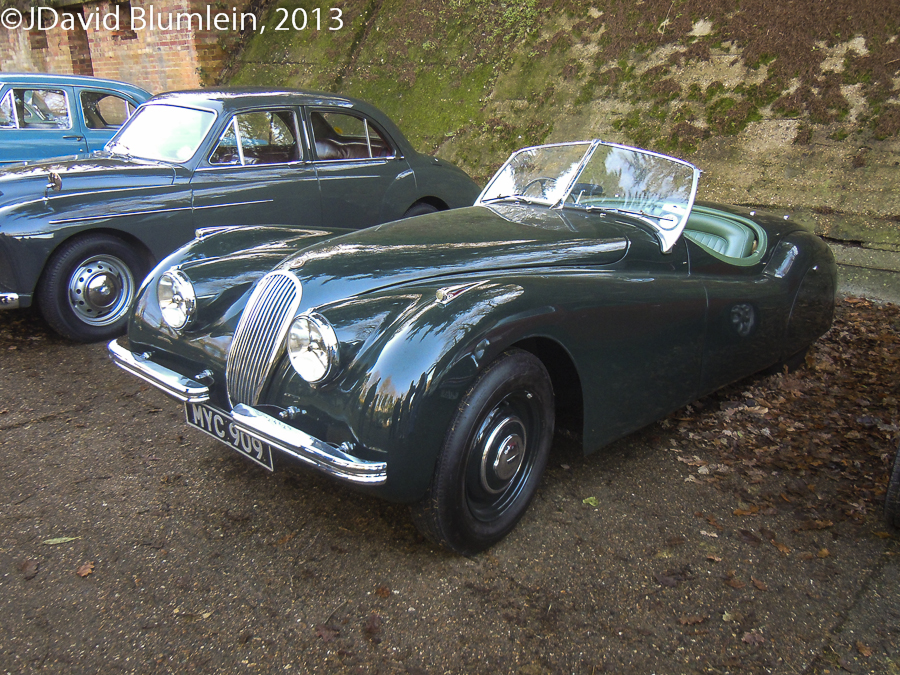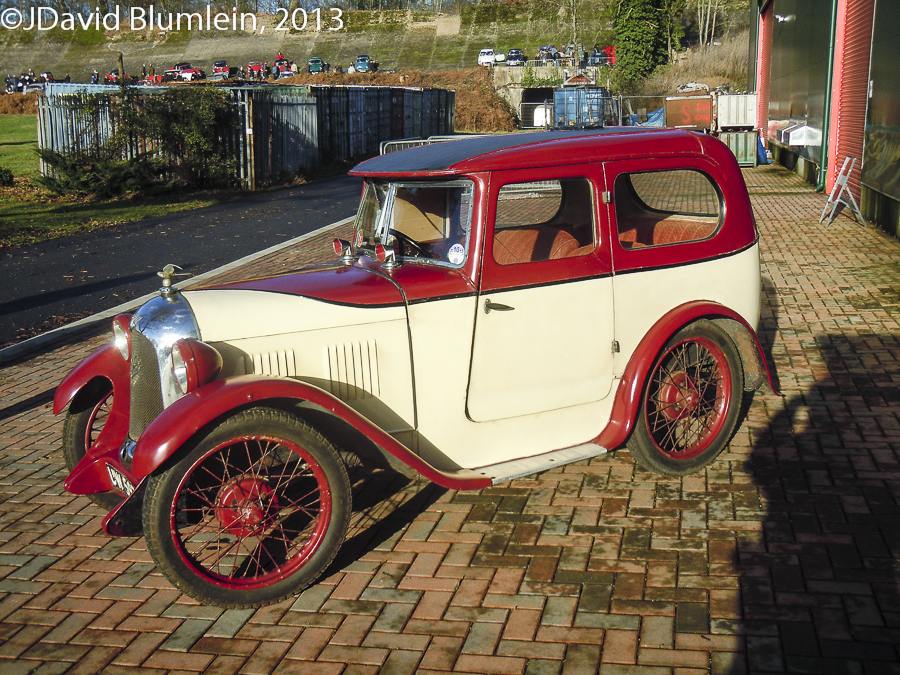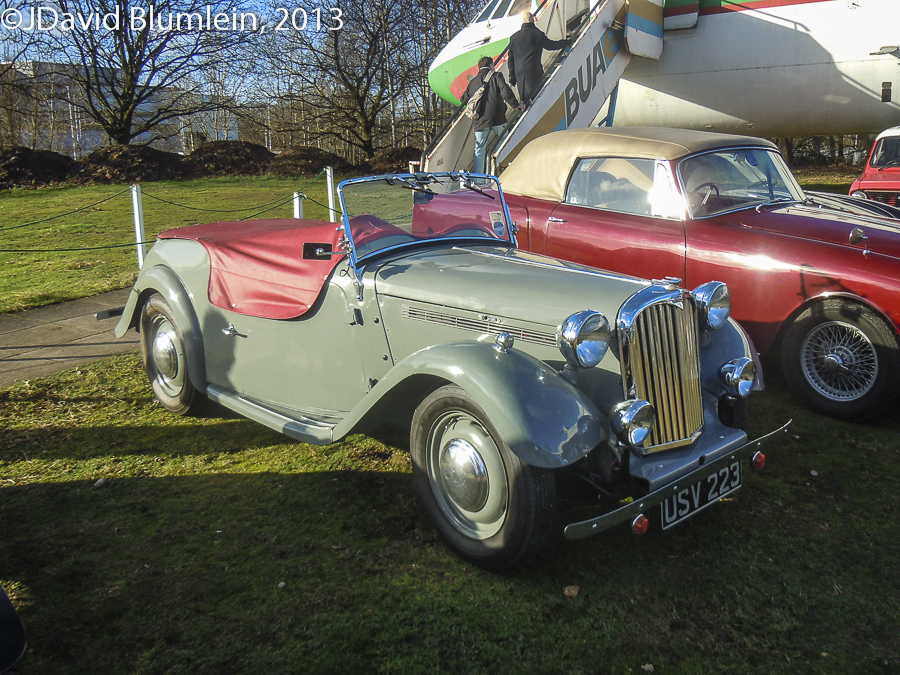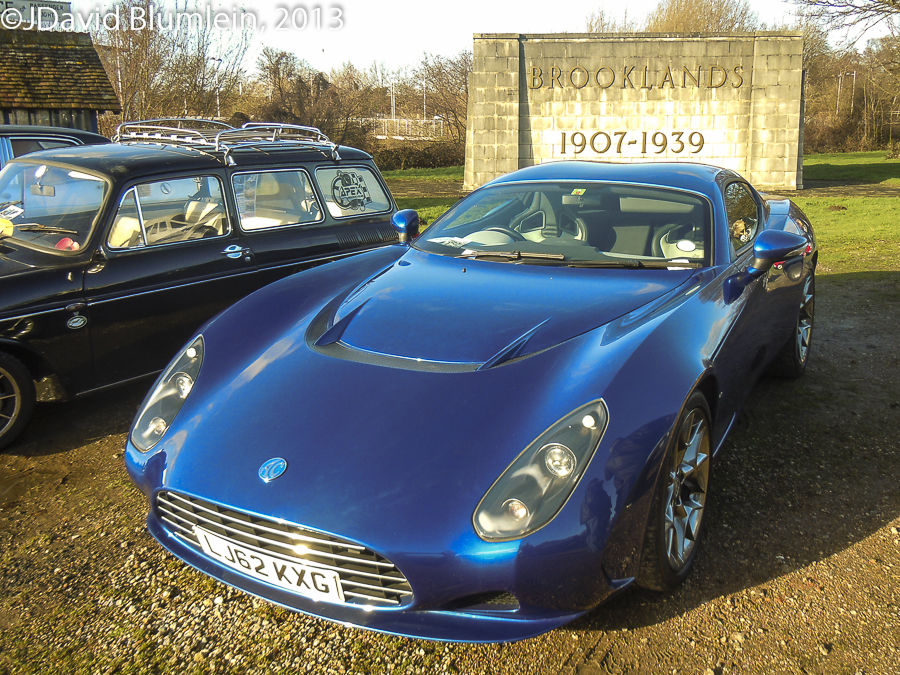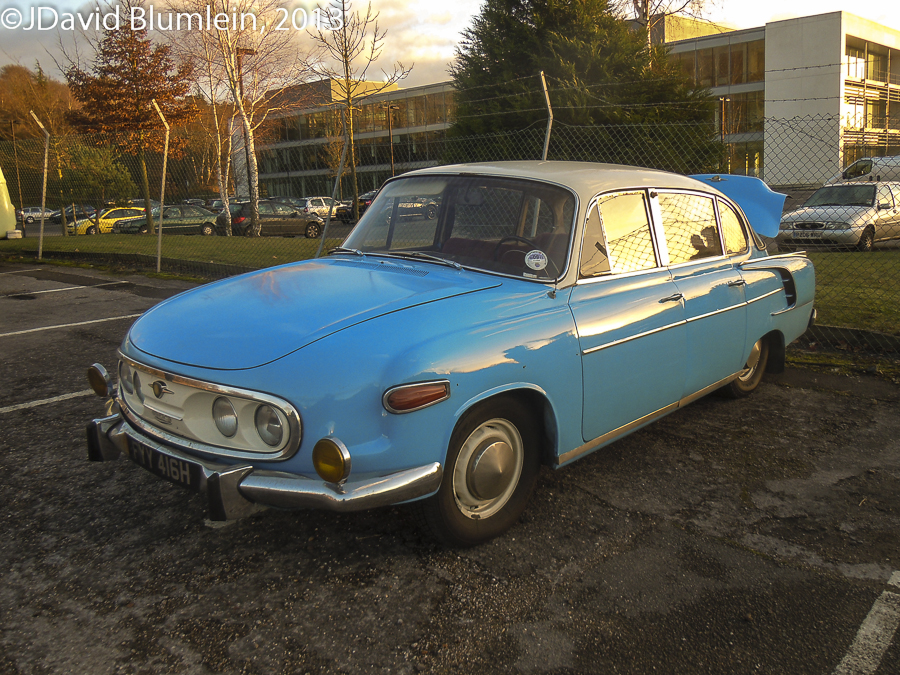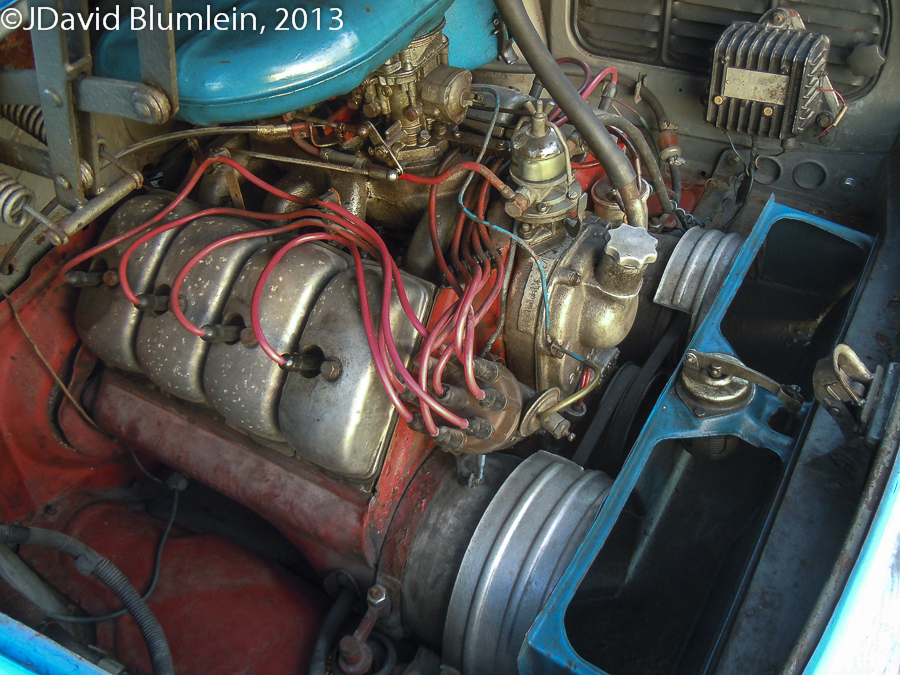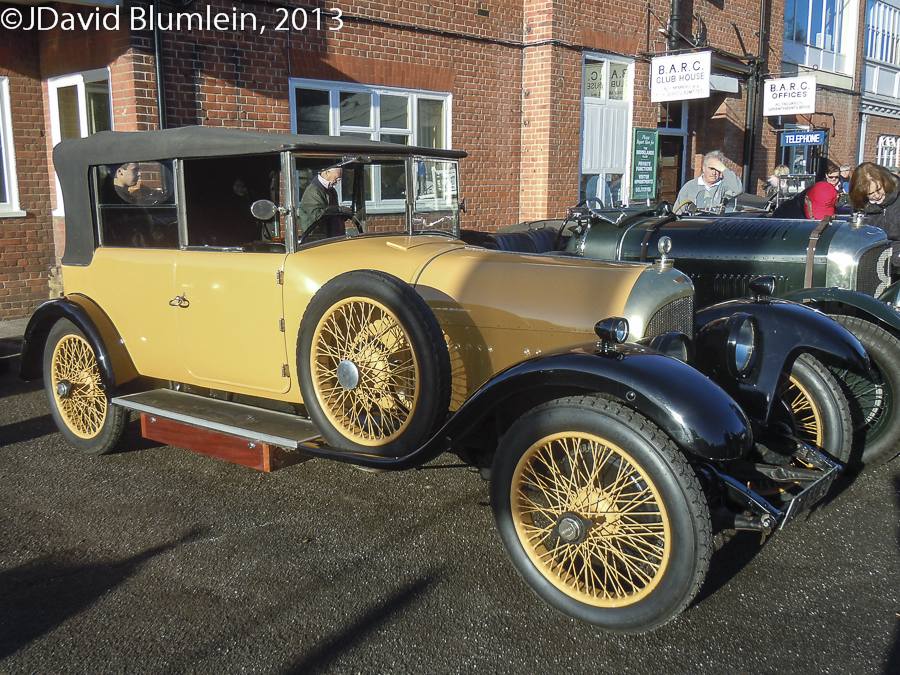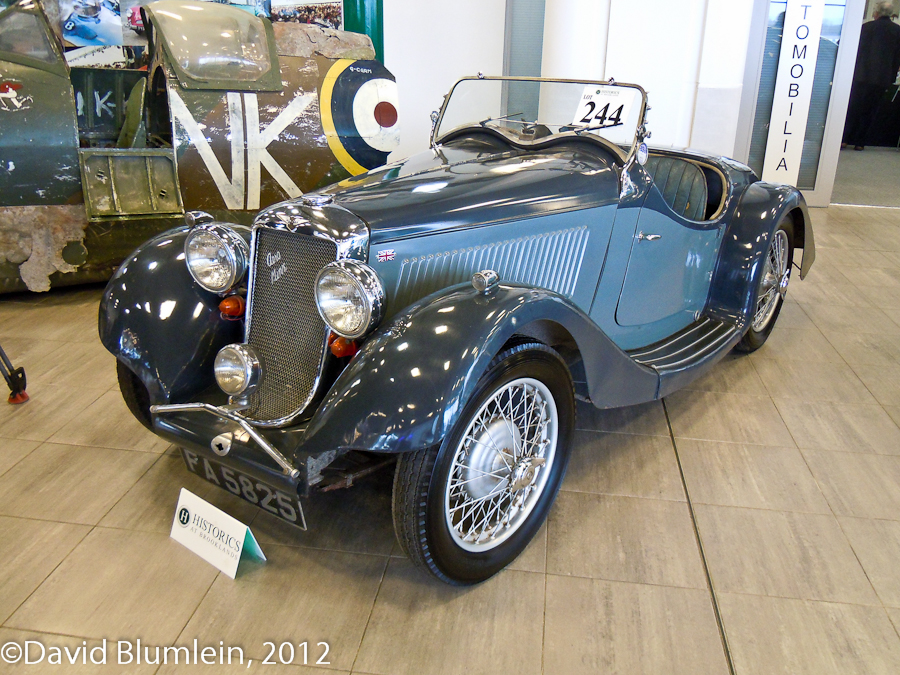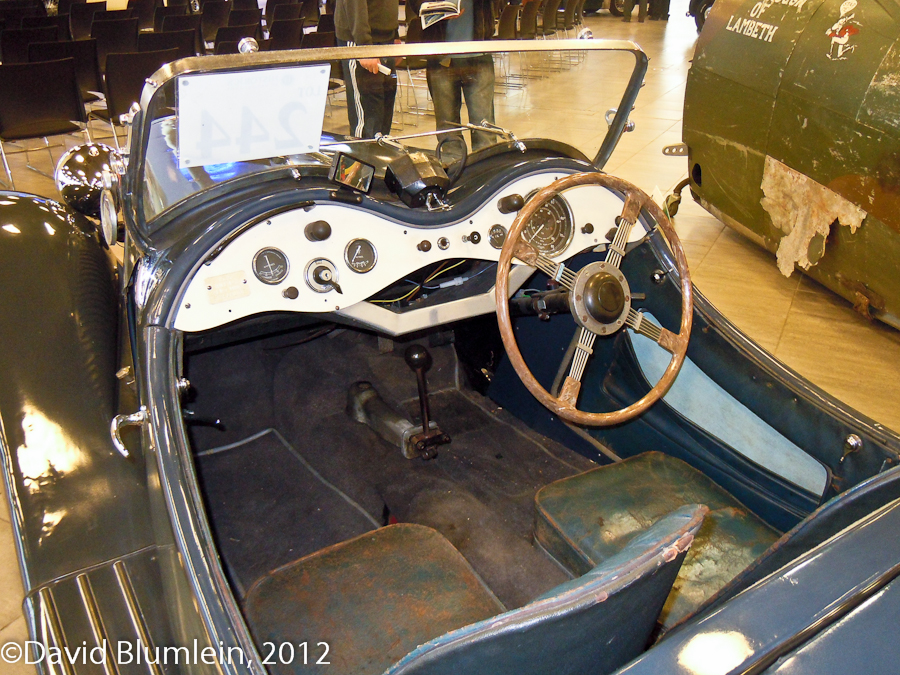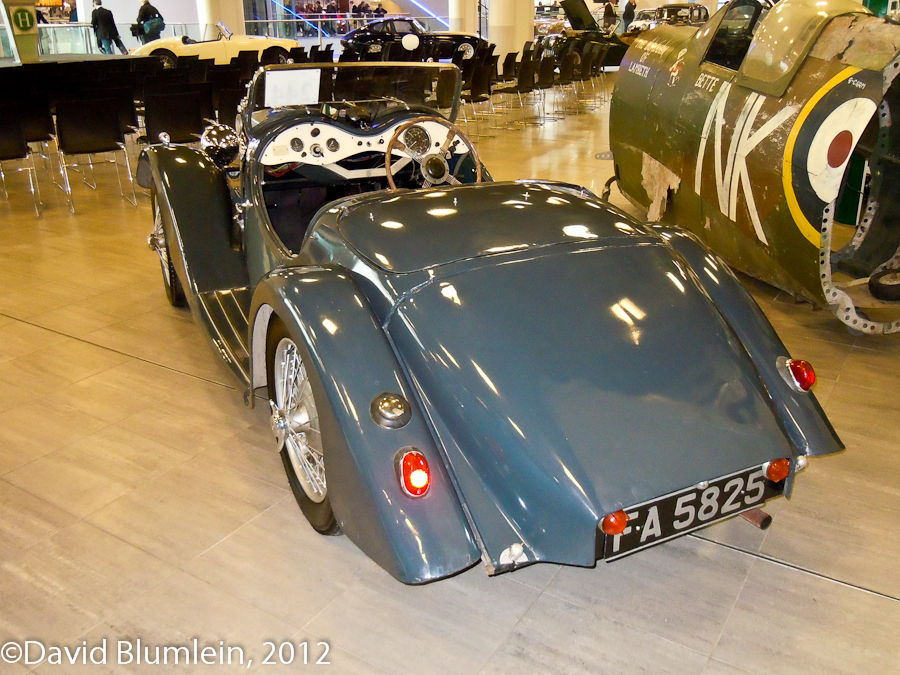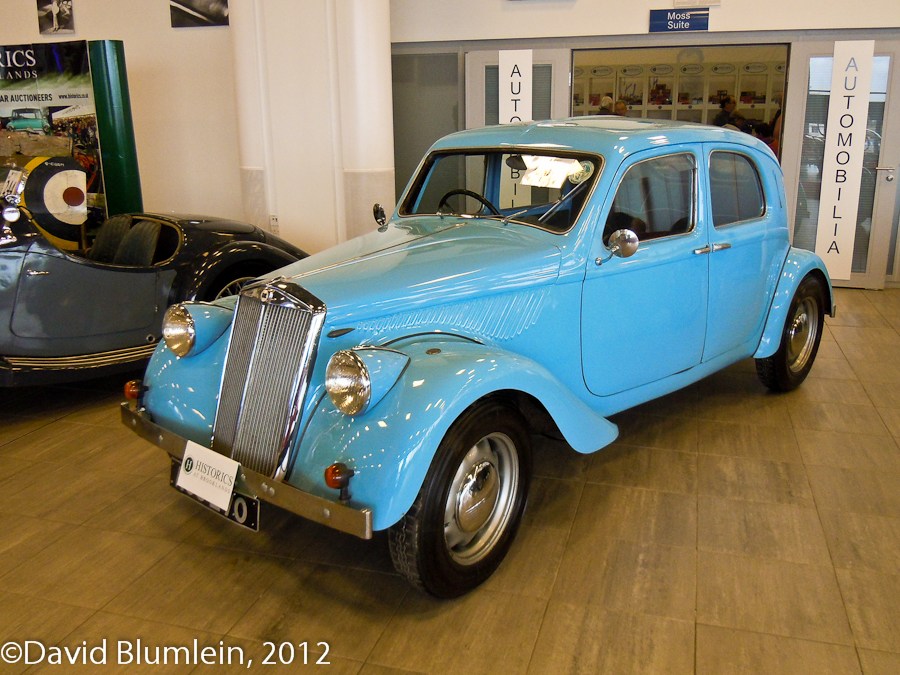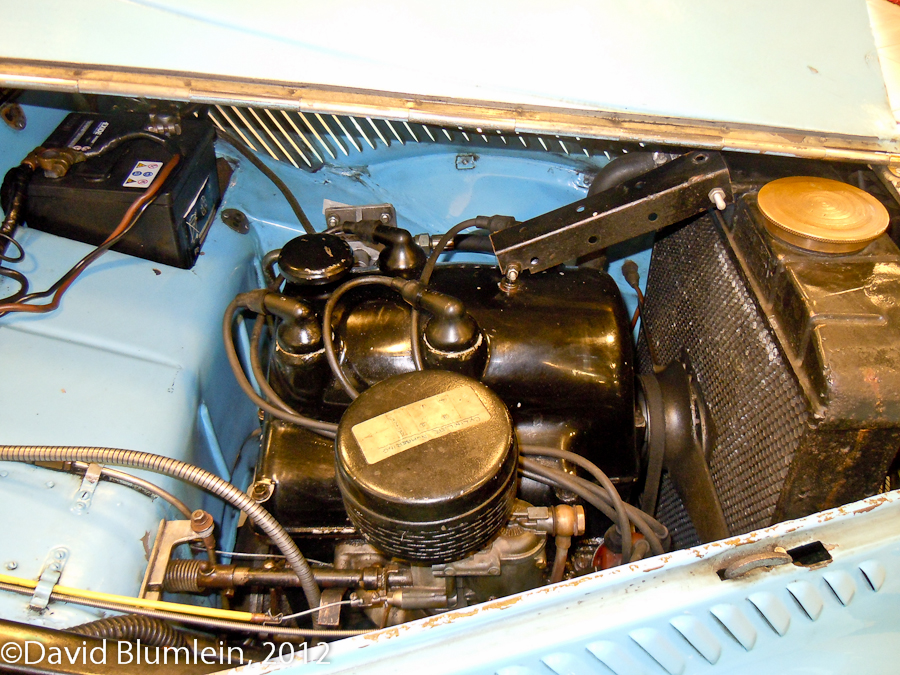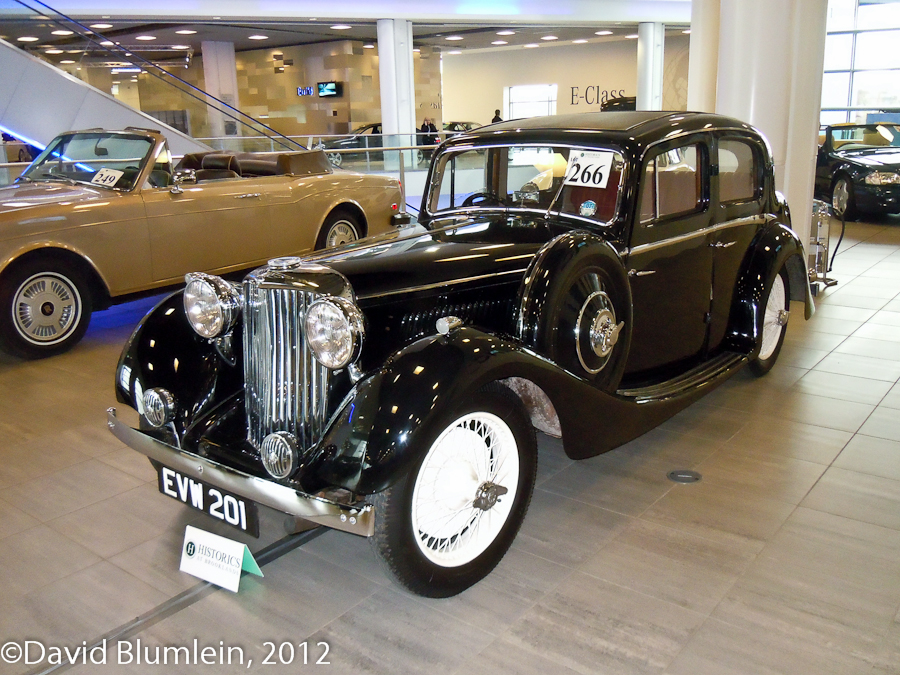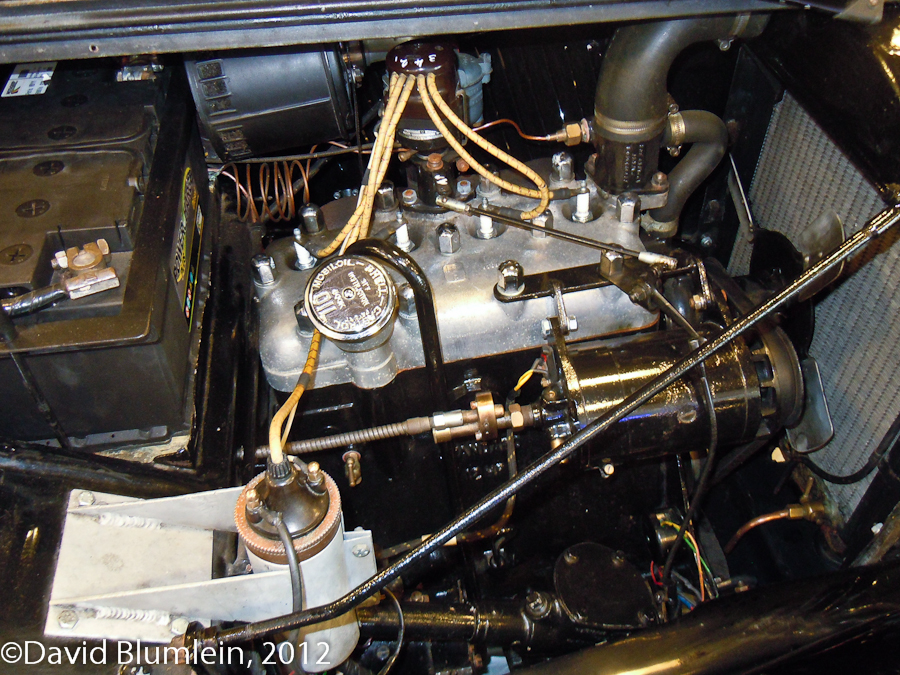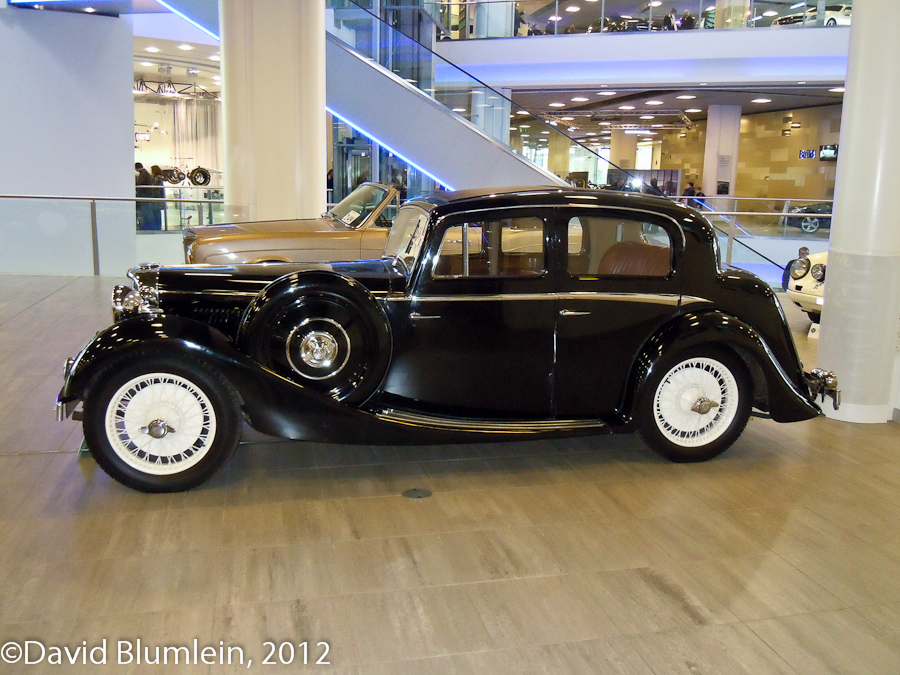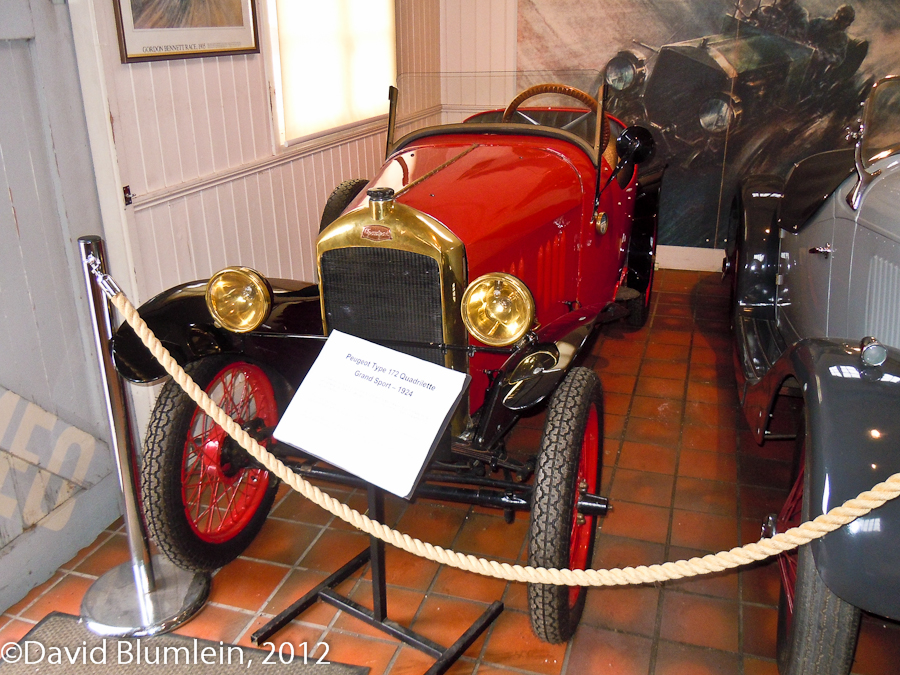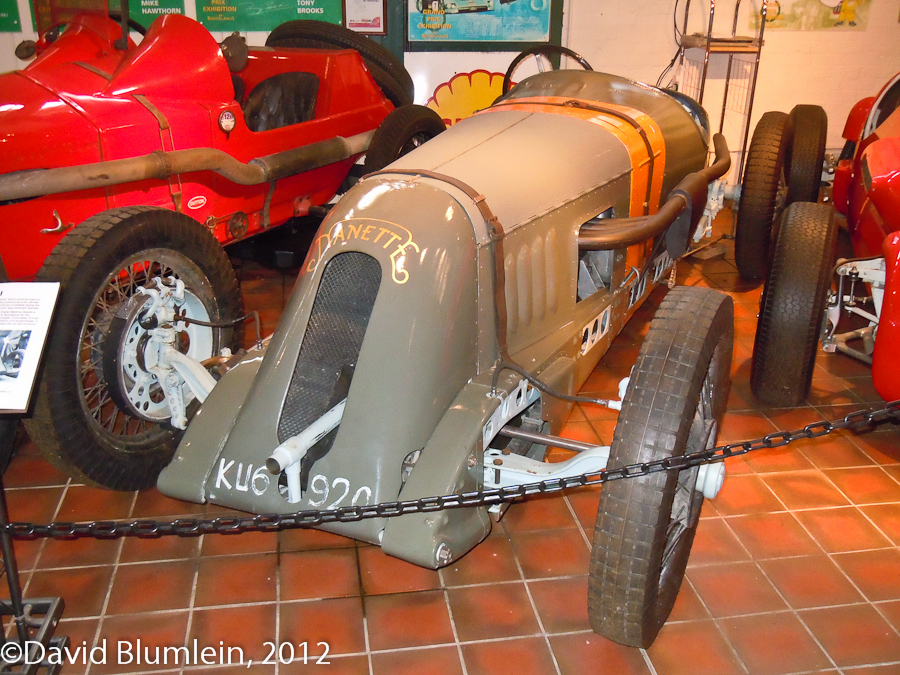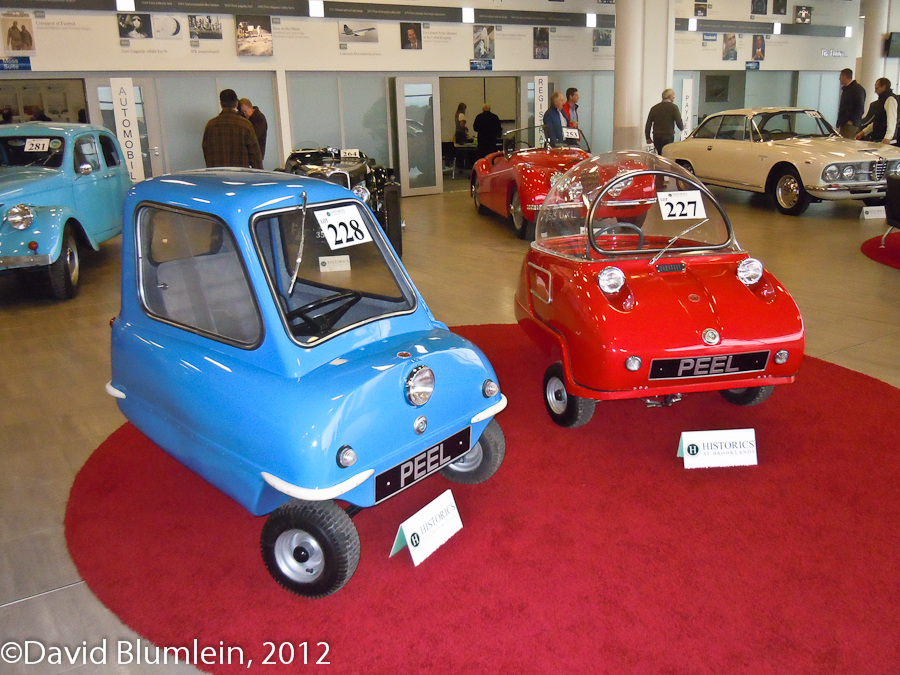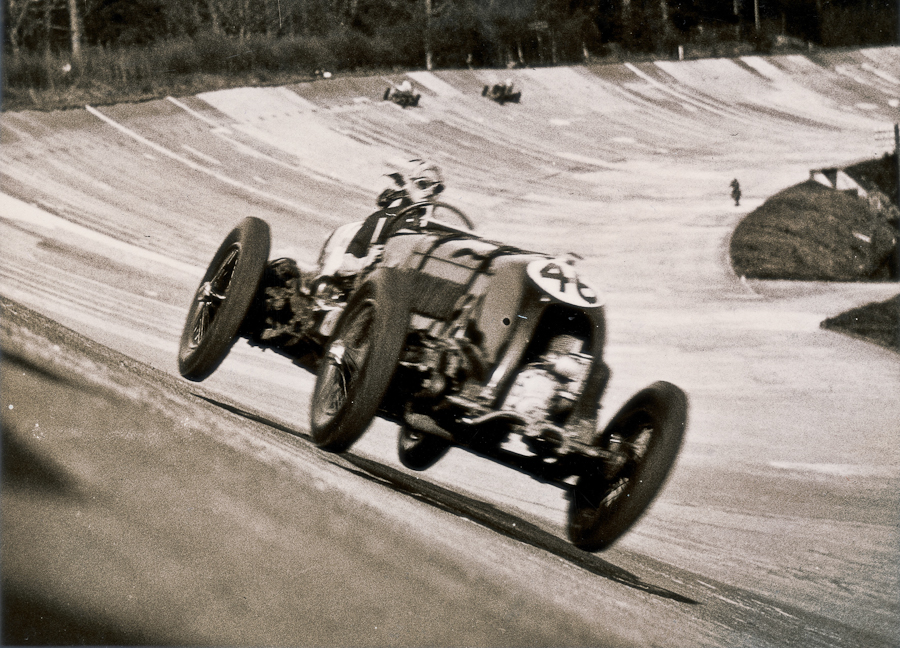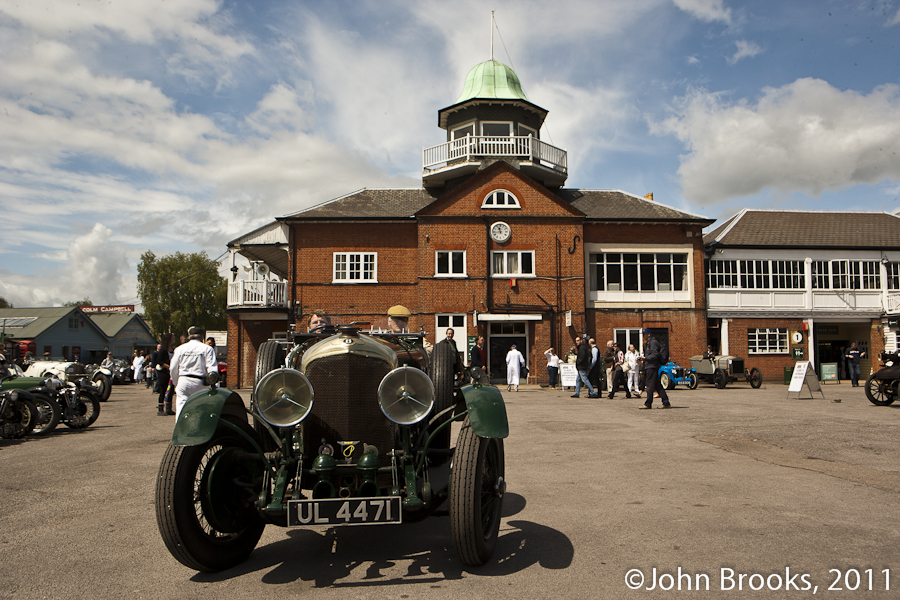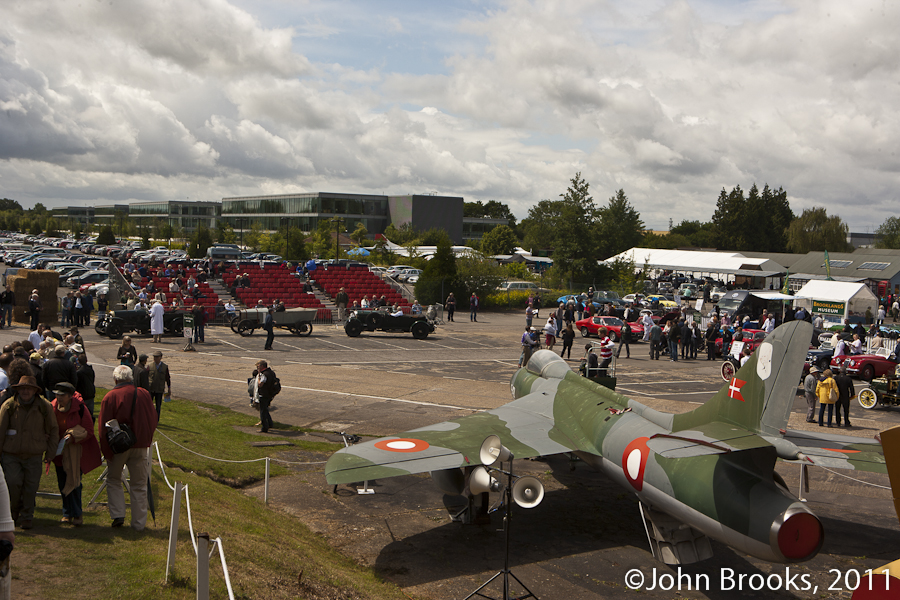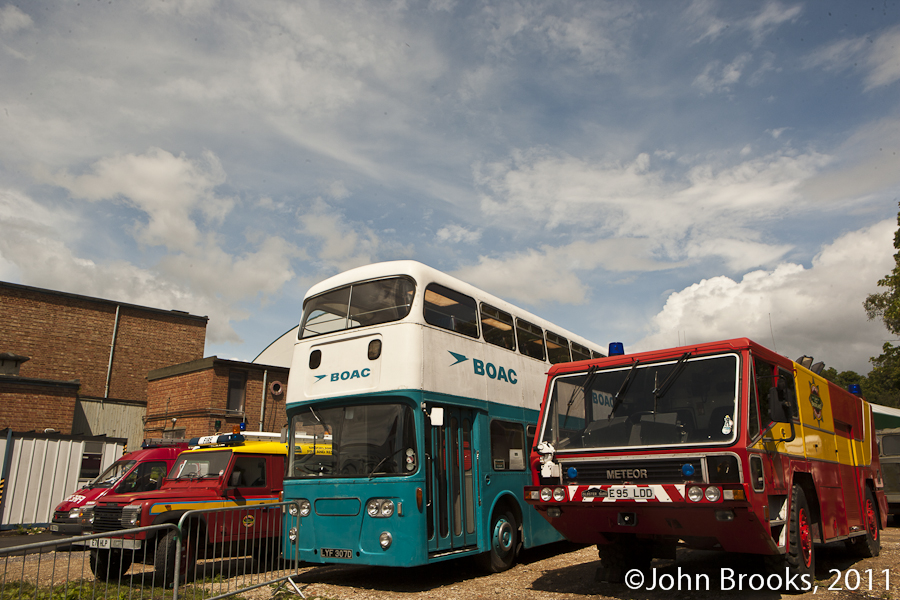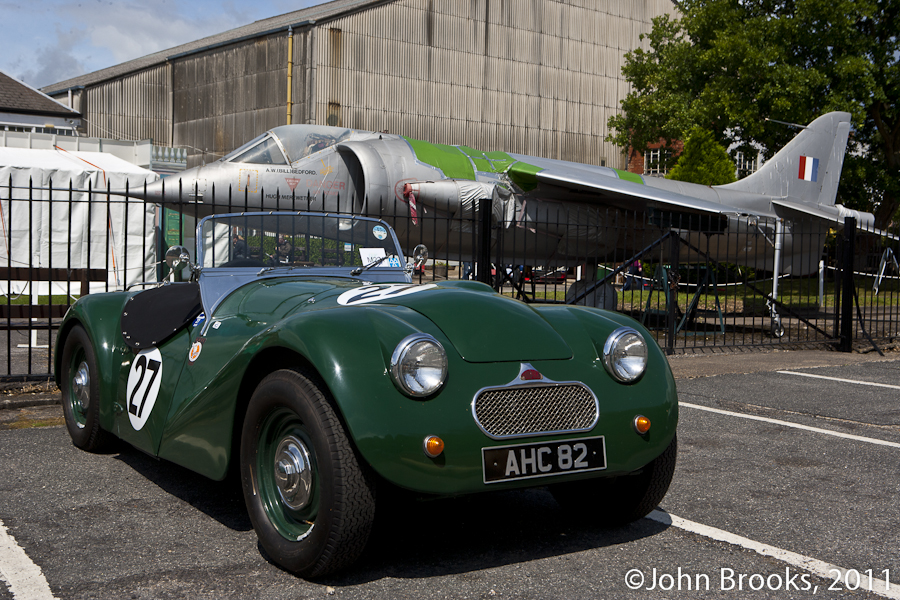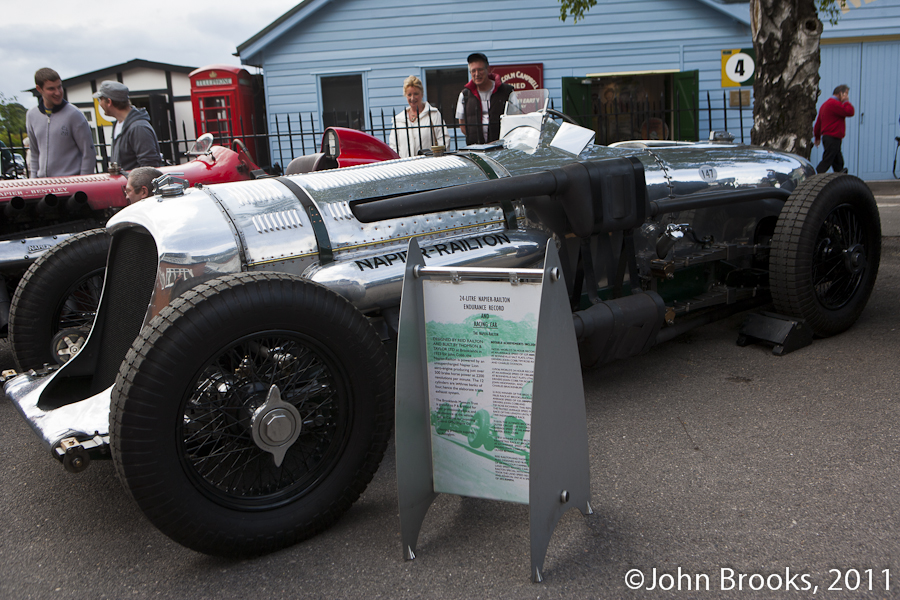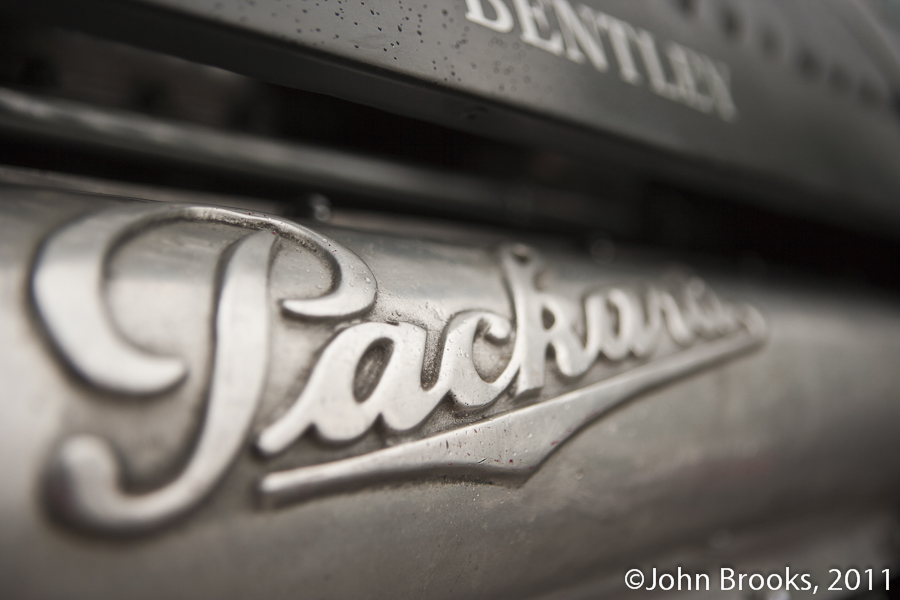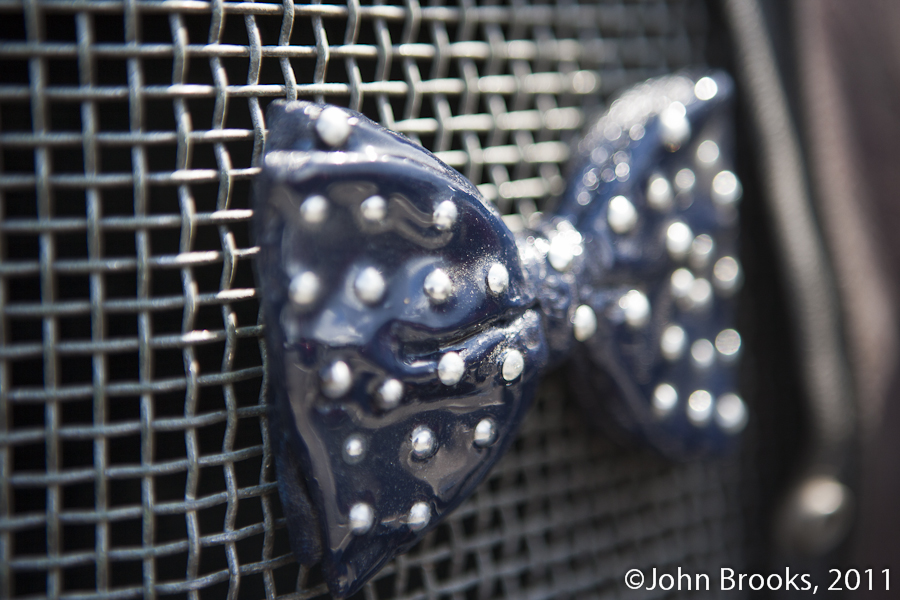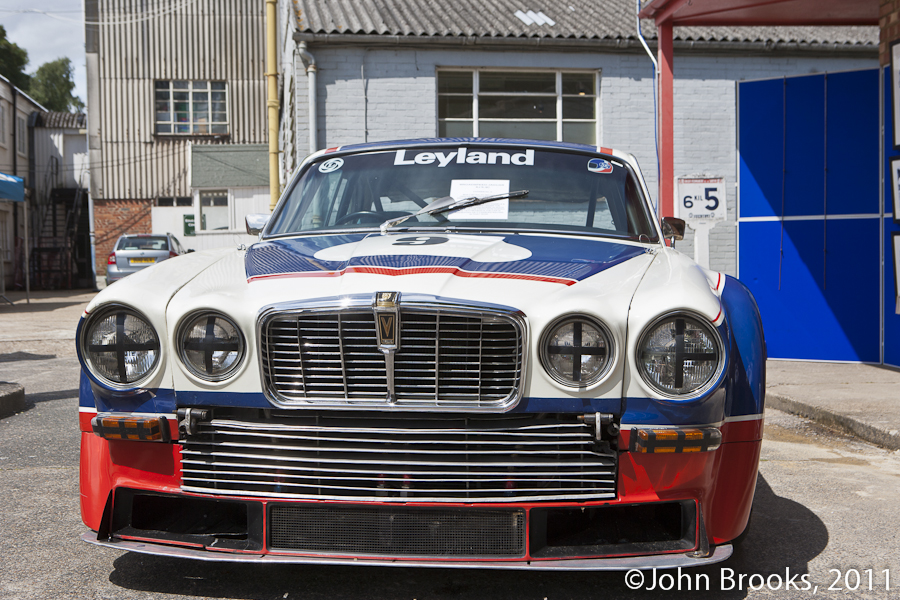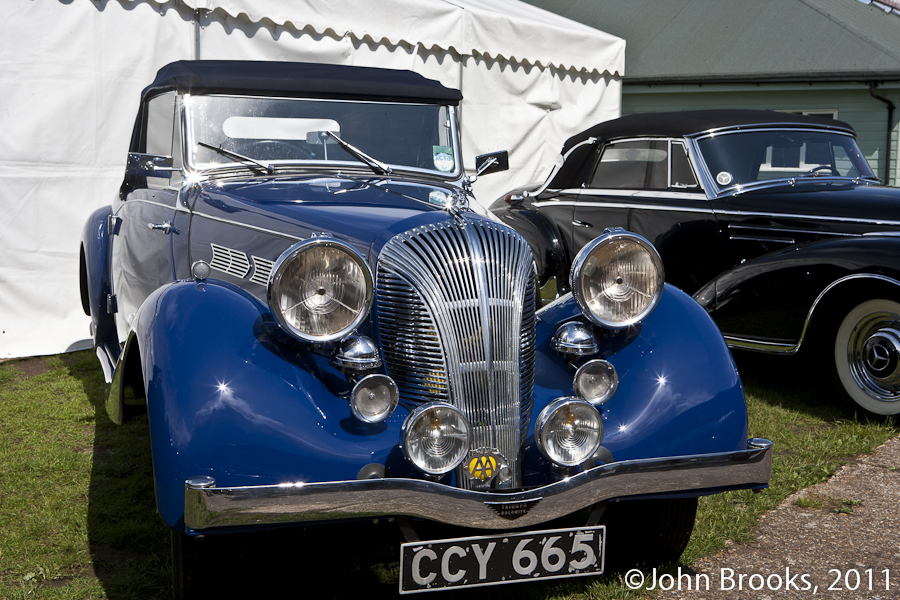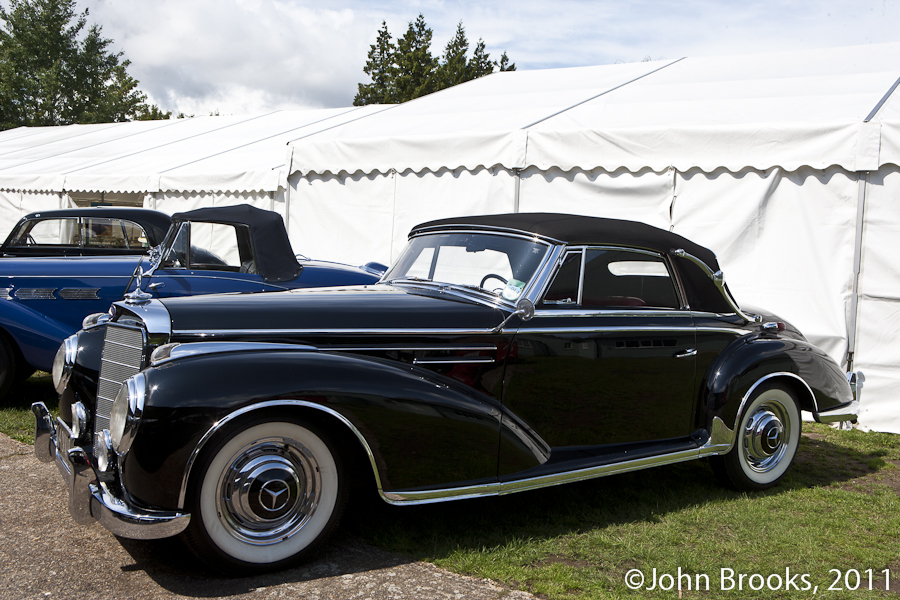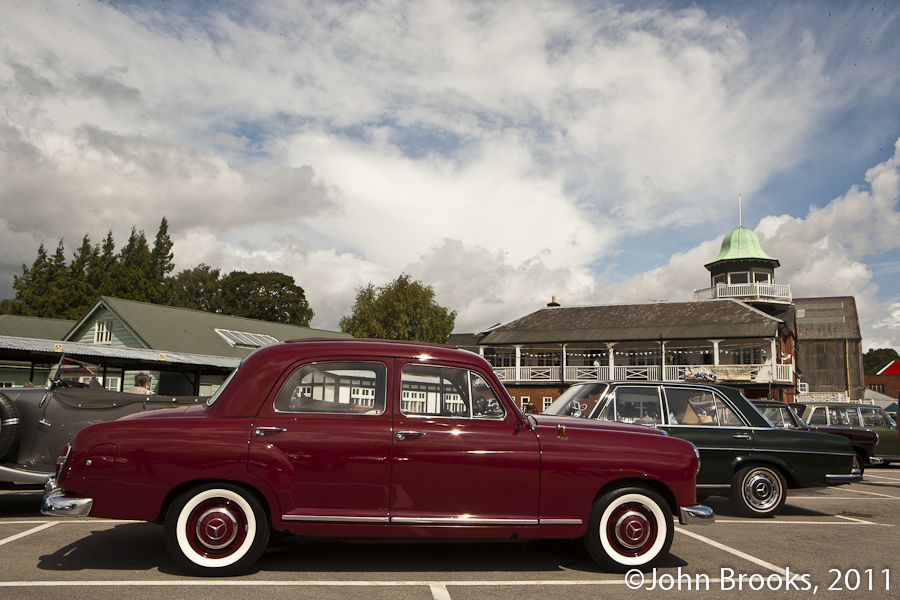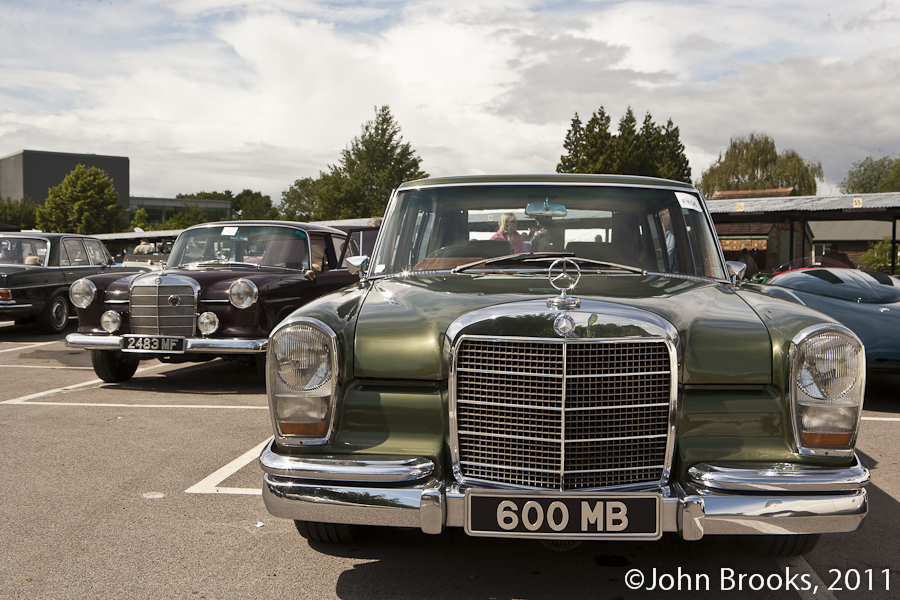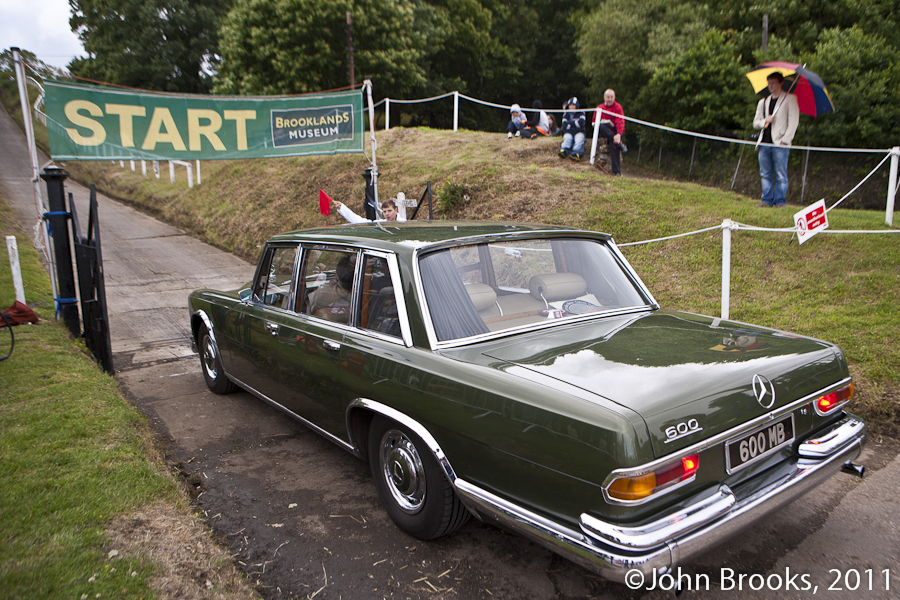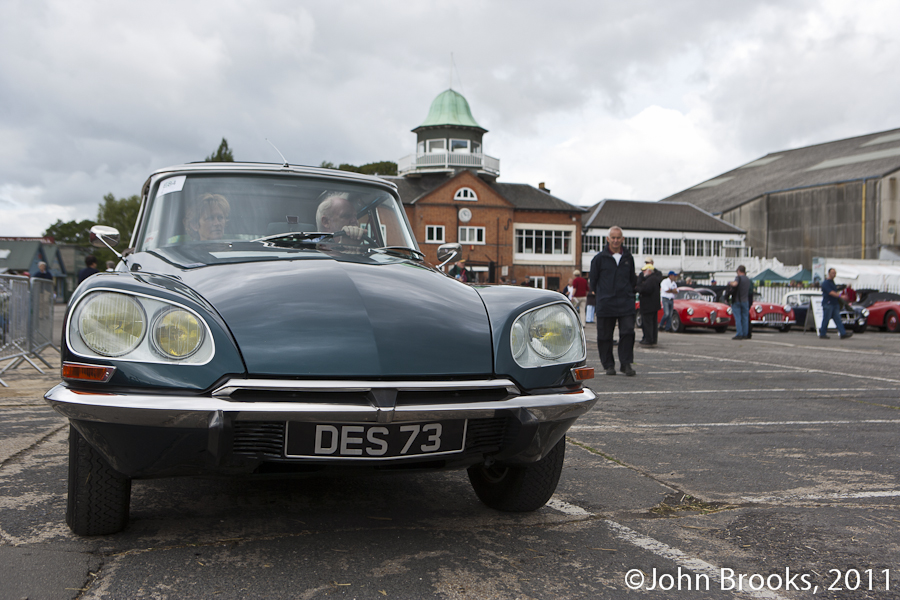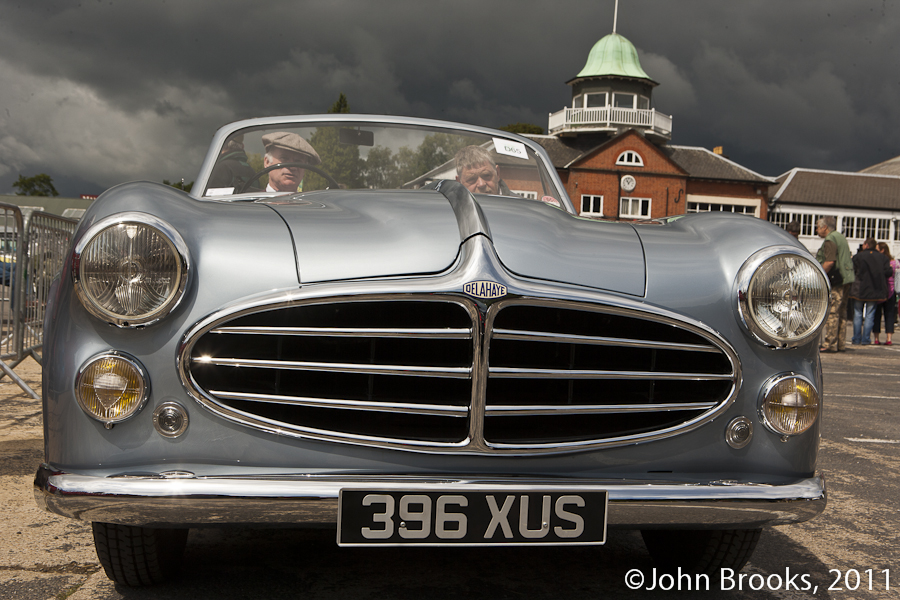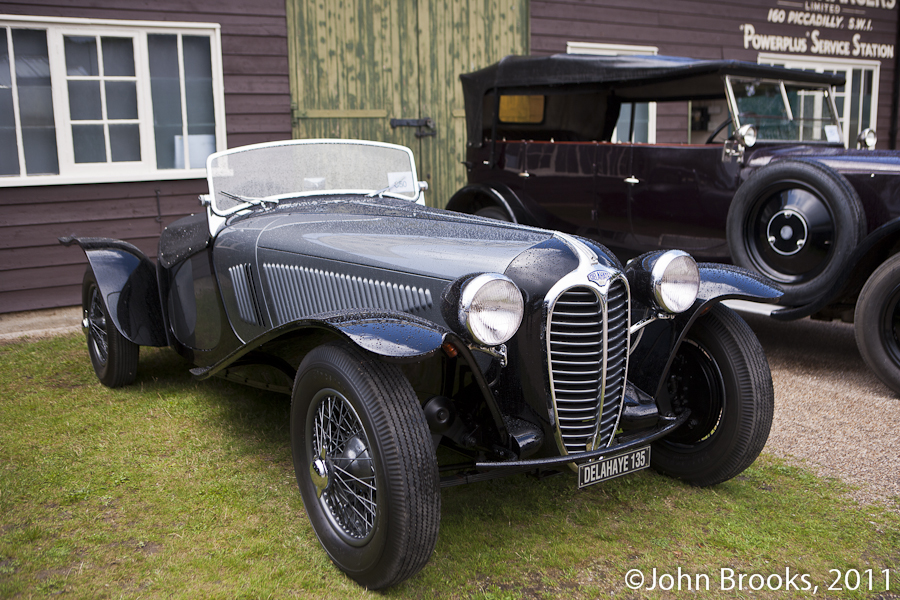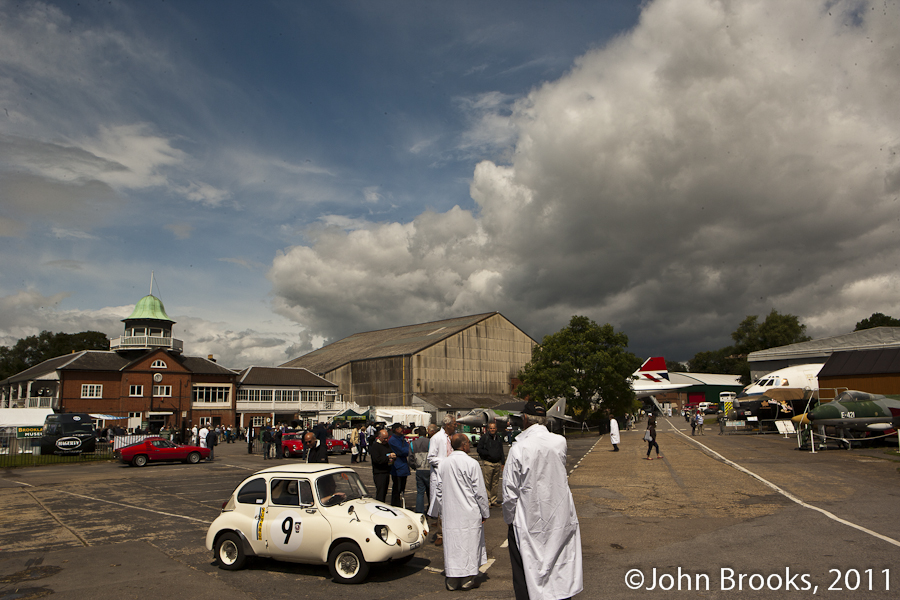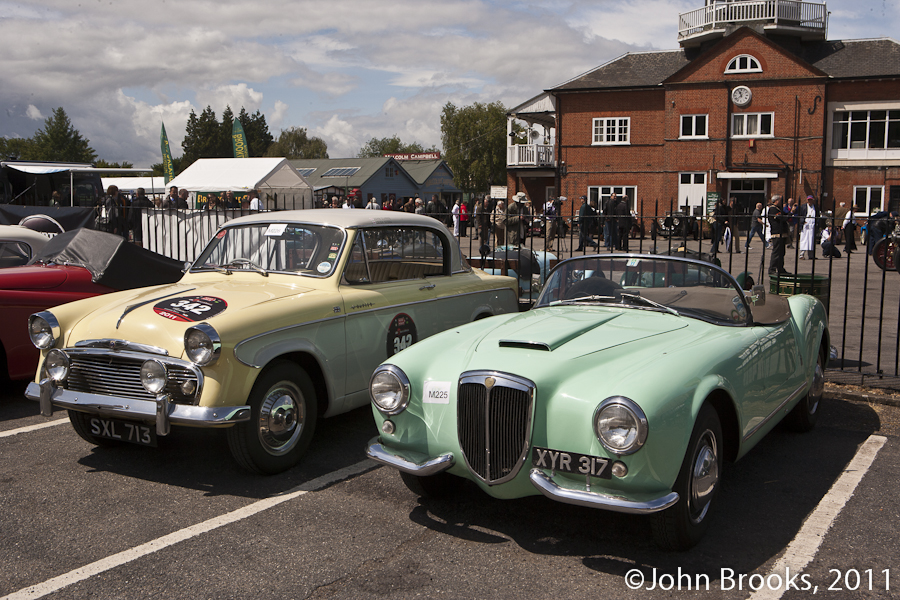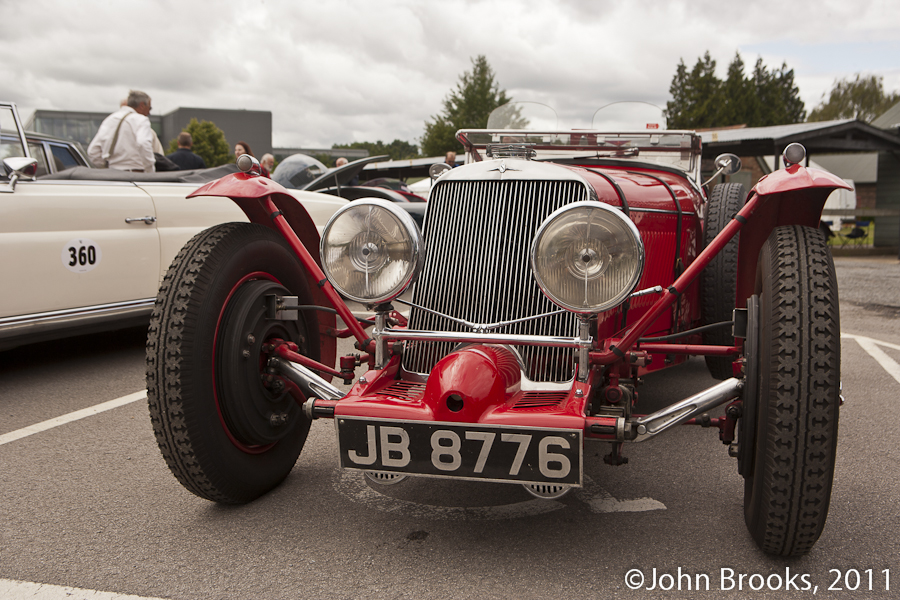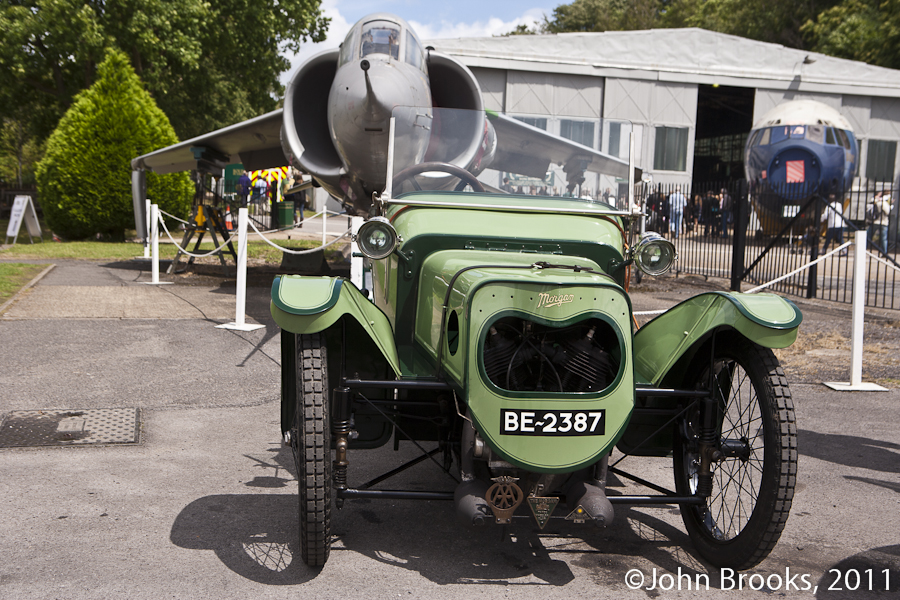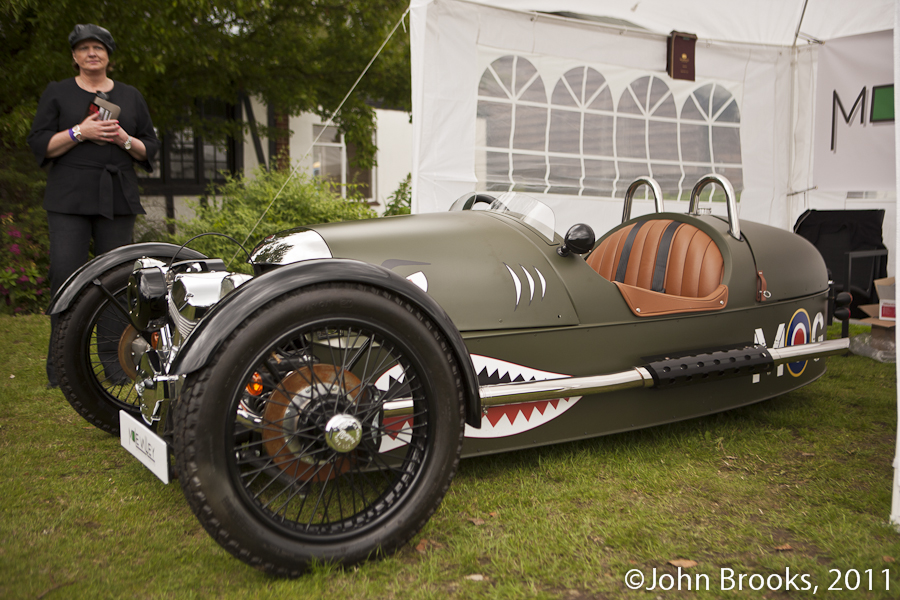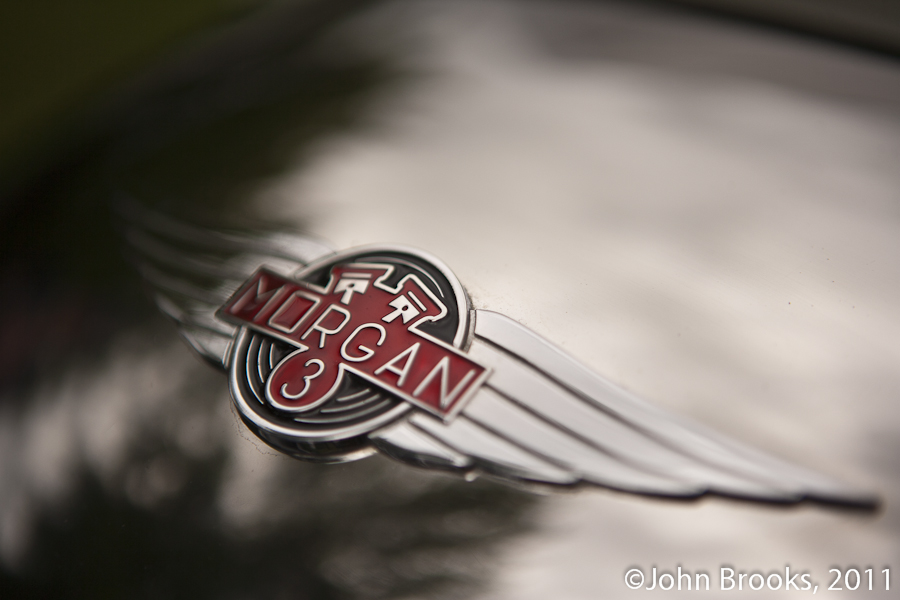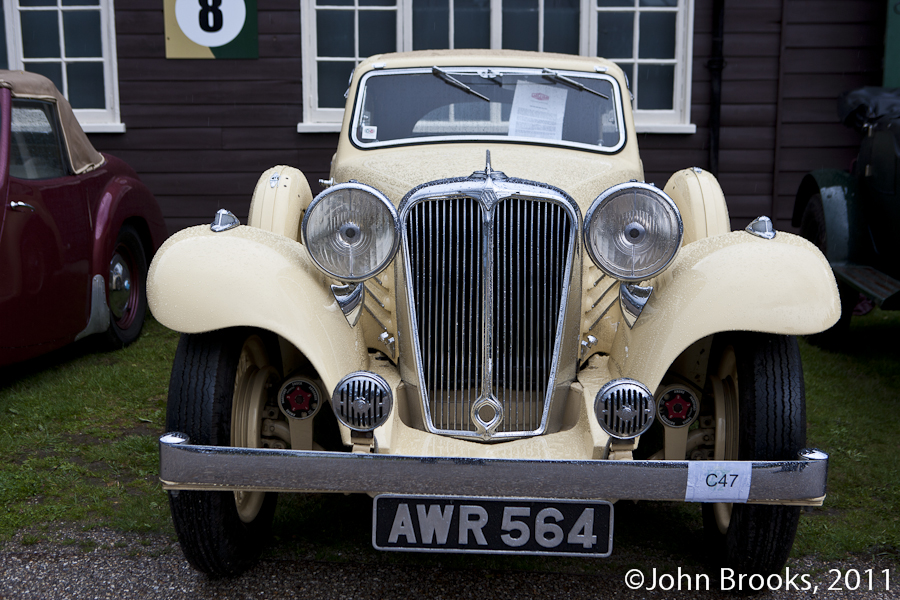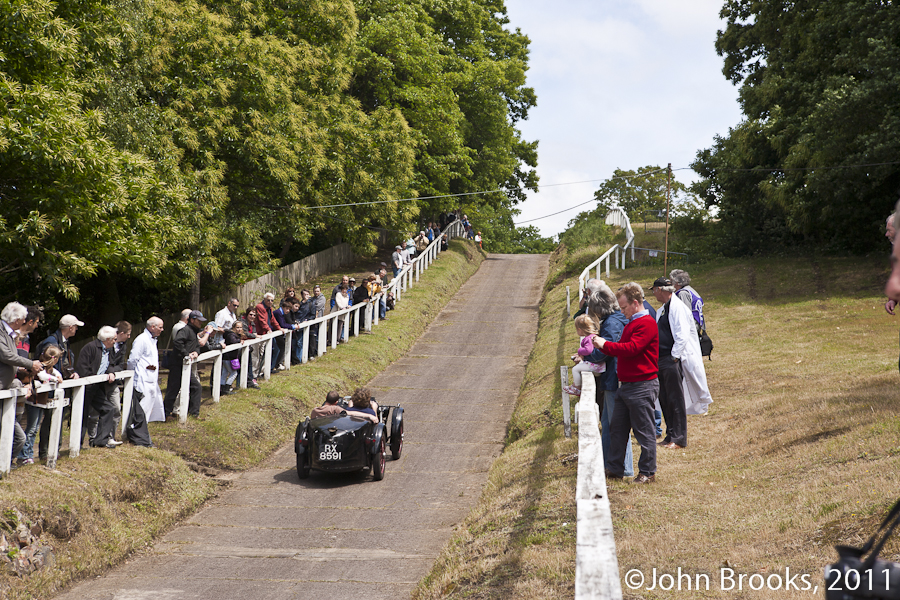The Brooklands Double 12 brought out fine examples of motoring art from Italy and specifically from Alfa Romeo. The Italians have created some of the most beautiful cars ever to turn a wheel, occasionally a dog too.
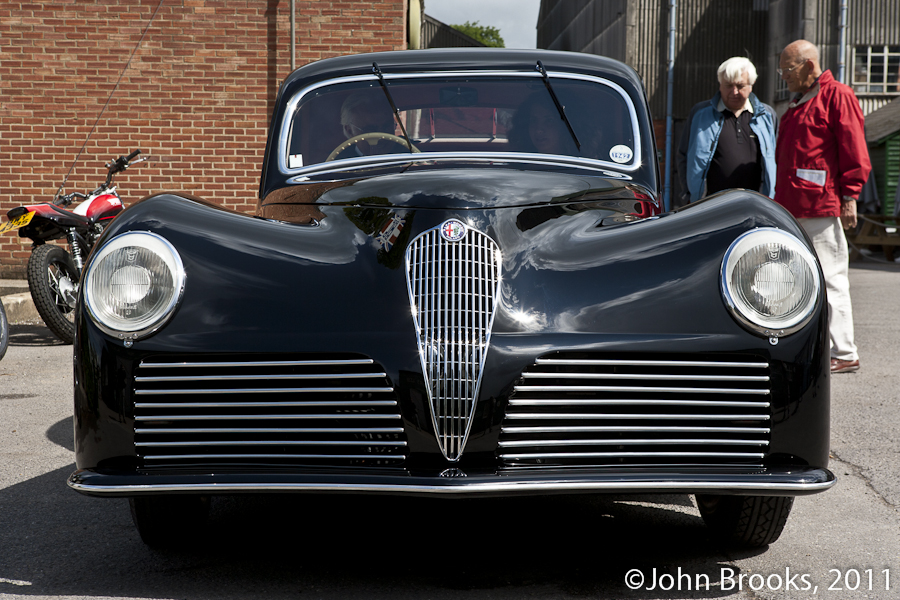
Alfa Romeo 6C 2500 Bertone
Almost the first car that the Special Correspondent and I tripped over on our arrival was this fabulous machine. It was a Alfa Romeo 6C 2500 SS Bertone dating from 1942.
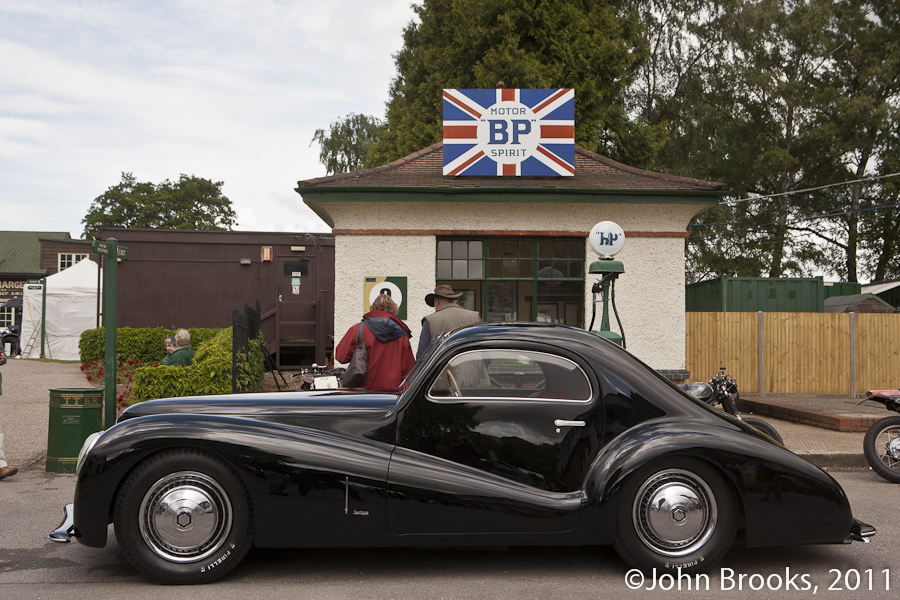
Alfa Romeo 6C 2500 Bertone
It was brought to England by its current owner, Corrado Lopresto, who has restored the car to its original glory.
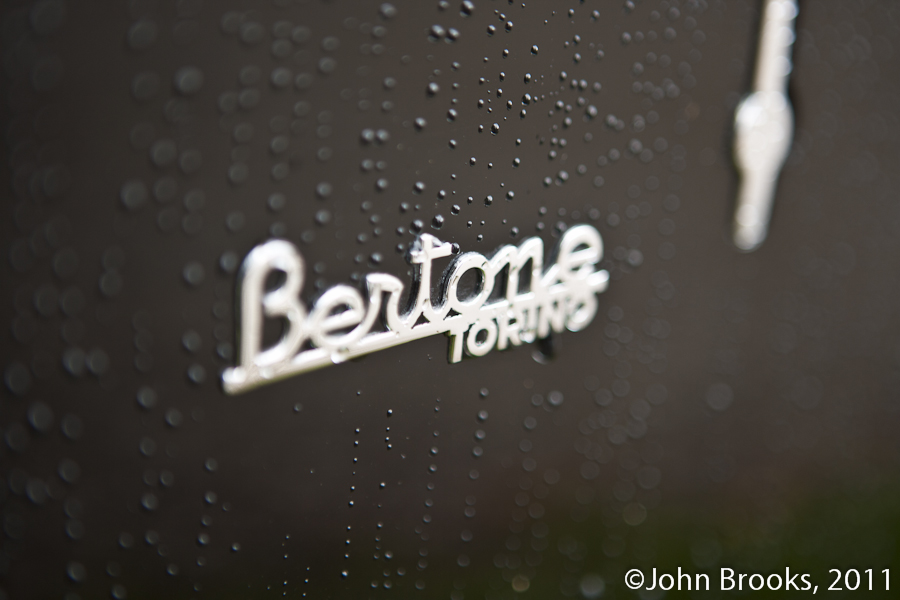
Artist’s Signature
Along the way it has won awards at Pebble Beach and Villa d’Este, including the 2011 Coppa d’Oro, it doesn’t get any better than that.
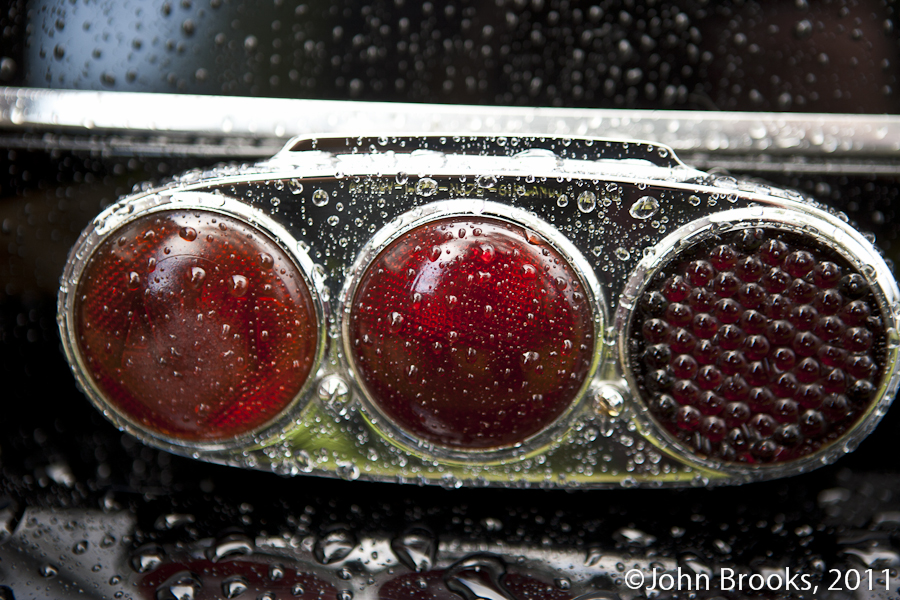
Tail Piece
According to my good friend Wouter Melissen the design was the work of Mario Revelli di Beaumont.
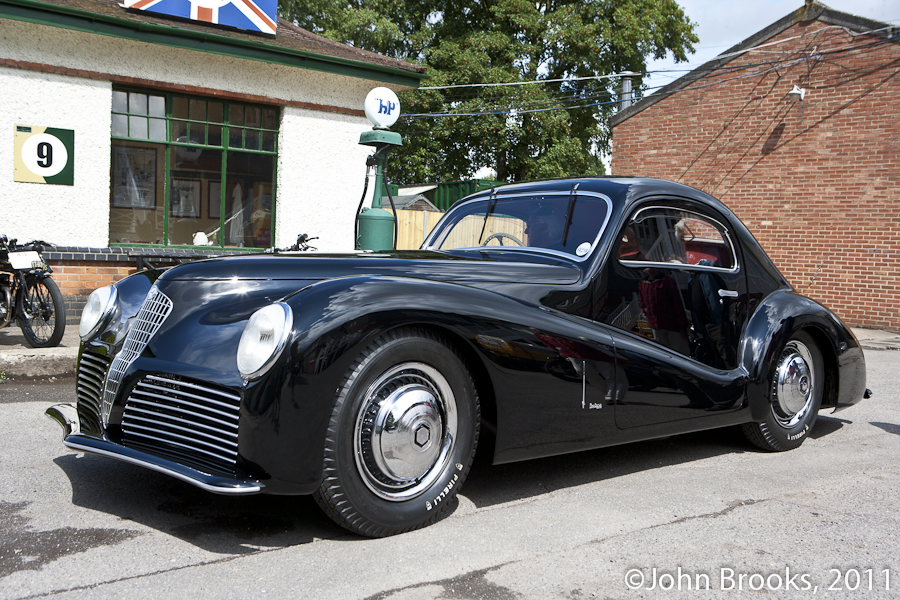
Alfa Romeo 6C 2500 Bertone
You can read up more about this fantastic car on Wouter’s excellent site HERE . Strange thing, probably a coincidence, but when you Google this car, most of the websites that describe it at Villa d’Este or Brooklands use a remarkably similar wording to that of UltimateCarPage, when it talked about the car a year ago at Pebble Beach. Spooky, this internet thing.
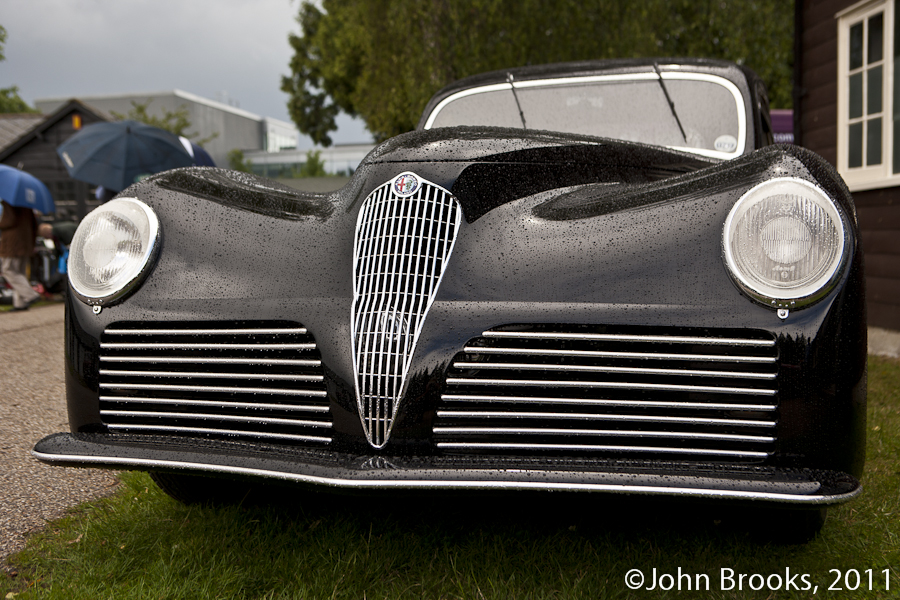
Alfa Romeo 6C 2500 Bertone
One thing that struck me is the question of how did this car get built at all? In 1942 World War Two was in full flow, Italy was fighting alongside Nazi Germany in the Western Desert and on the Russian Front. All materials were rationed and there was strict control of industrial activity. It must have been very powerful JuJu that allowed the war effort to be diverted to build this one off. Perhaps the Italians have always had a better sense of what is important and what is not, most of them would have seen through Mussolini’s bombast by that time. Certainly nothing like this could have been built in war time Britain, the Man from The Ministry would never have allowed it.
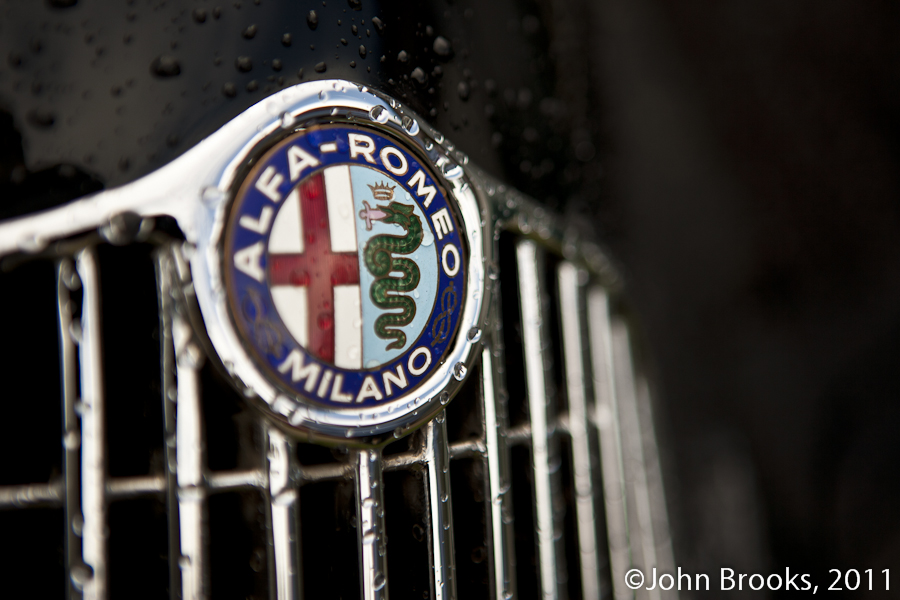
Badge Engineering
The car was built in 1942, delivered to Concessionaria Oreste Peverelli in Como, then rescued from Italy to Switzerland to remain intact during the Allies’ invasion of Italy. It is a thing of beauty and we were lucky to see it at Brooklands.
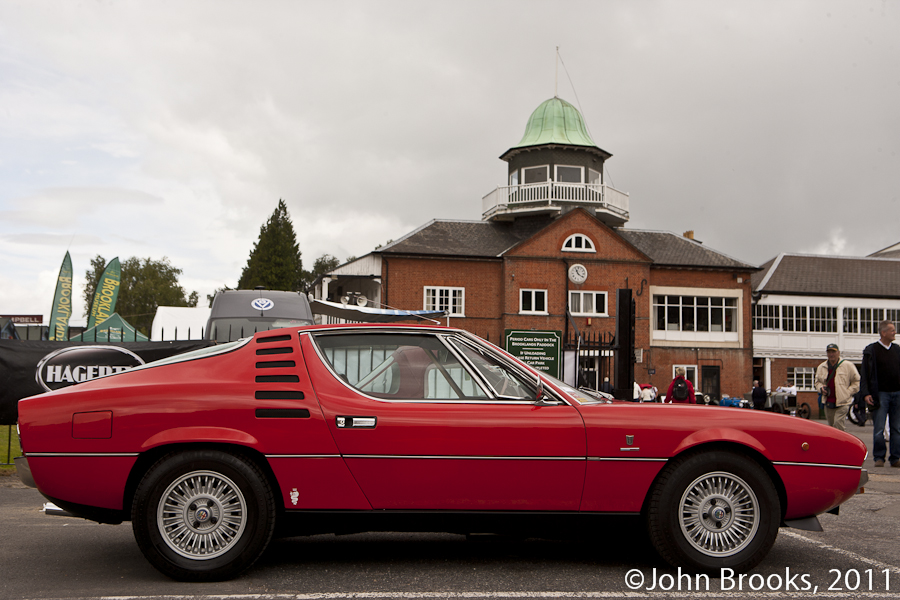
Alfa Romeo Montreal
Less exotic but still very worthwhile was this Alfa Romeo Montreal.
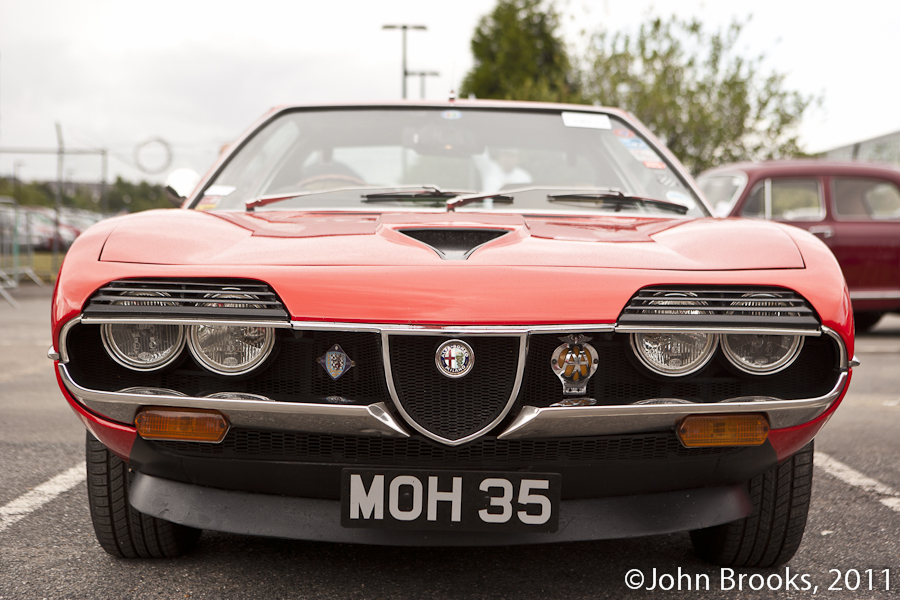
Alfa Romeo Montreal
The styling say 1970’s in the same way as the Bertone classic says 30’s. Yet this does not detract from it, there really was Life on Mars.
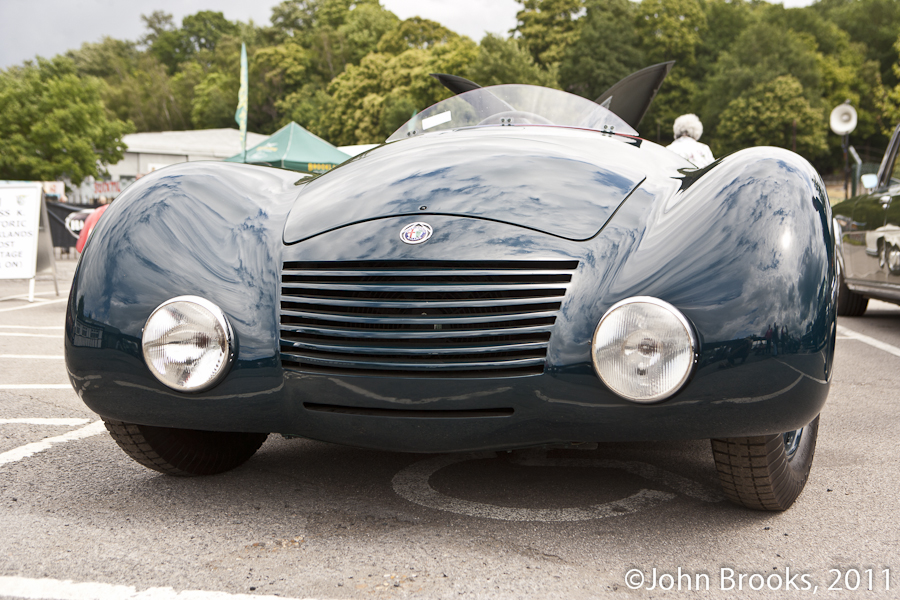
Another exhibit that purported to date from the 30’s was this weird creation.
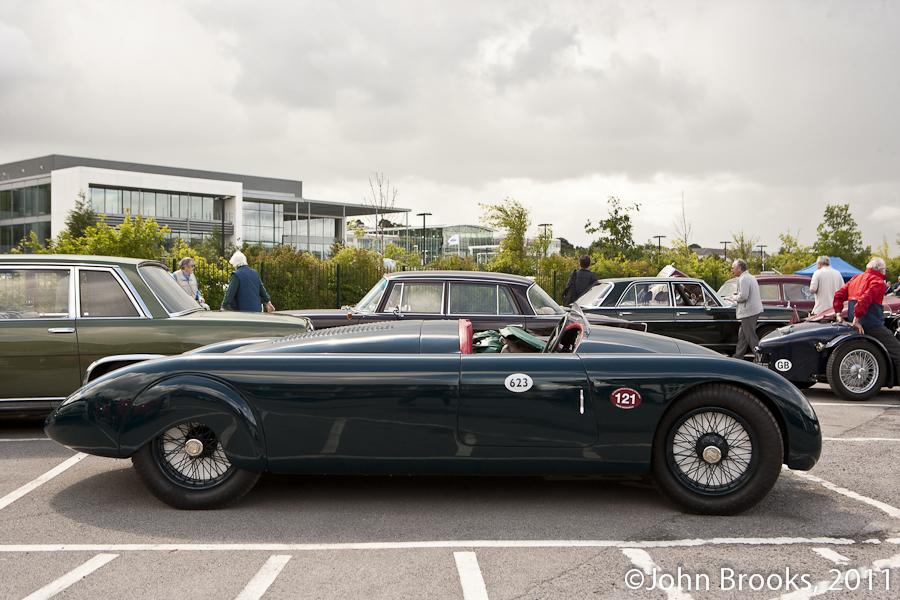
Alfa Romeo 6C 2300 Aerodinamica Spider
It is described as a secret project commissioned by Vittorio Jano.
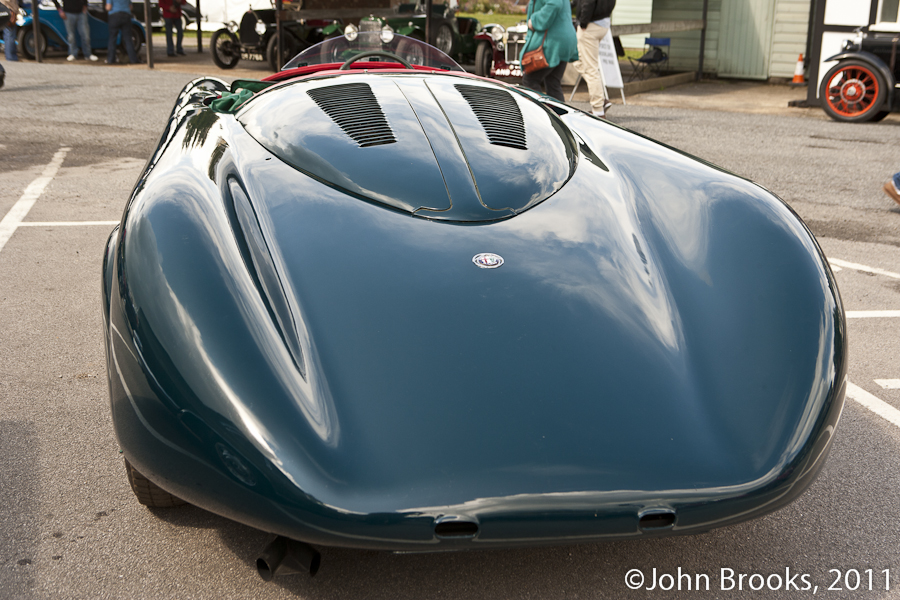
Someone has taken a lot of time and trouble to post up a full history on Wikipedia.
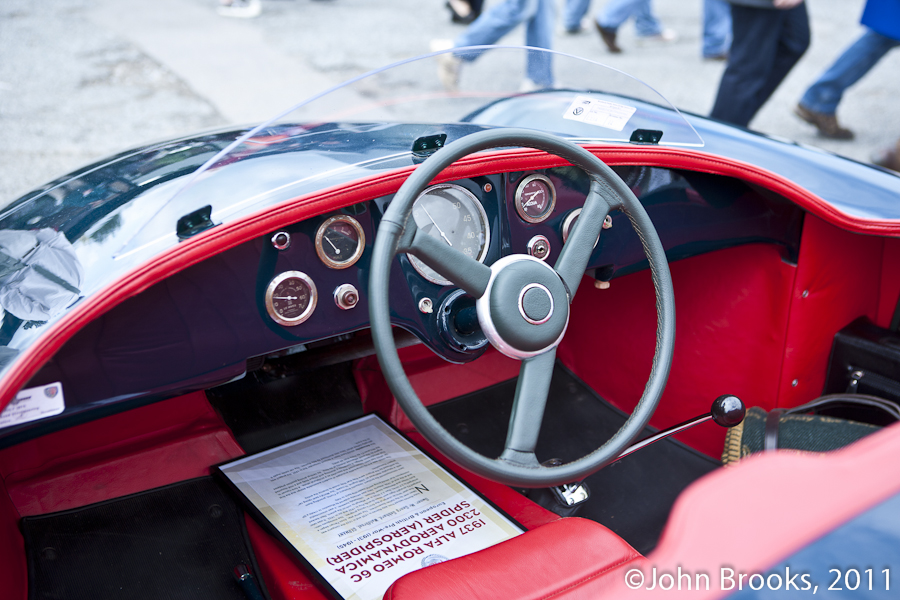
Cockpit
In 1935, Vittorio Jano, working with the brothers Gino and Oscar Jankovitz, created a one-off mid-engine prototype on a 6C 2300 chassis (no. 700316),which Jano had shipped to Fiume, Croatia in 1934. The brothers Jankovitz had been close friends with leading Hungarian aerodynamicist Paul Jaray, and the prototype, called the Alfa Romeo Aerodinamica Spider, was an especially early and clear example of ponton styling — a genre that would overtake automobile styling and last until the 1960s. Jano had intended to fit a V12 engine, though that possibility disappeared when Jano himself was fired from Alfa in 1937.
Based on documents kept in the family Jankovits the history of the car’s development is as follows:
Summary of the “Aerospider” Alfa Romeo Jankovits – 6 C 2300 Aerodinamica Spider “Aerospider” (constructed 1934-1937)
The prototype of modern automobile design and the first car which had been constructed and executed as a sculptural whole.
The combination of a very advanced aerodynamic body with the engine behind the central driver’s seat, on the most advanced chassis of its time makes this Alfa Romeo unique in the history of automobiles.
This special version of an Alfa Romeo 6C 2300 belonged to a secret project by Vittorio Jano and the brothers Jankovits.
The Aerospider represents:
The first supercar of “modern” sports car design.
The first mid-engined car with central driving position in the history of automobiles designed to keep the centre of gravity in the middle of the car – 60 years ahead of the McLaren F1
The first car designed to take account of newly developed principles of aerodynamics, to provide low-drag both externally and internally.
The article makes a whole batch of other claims about the car.
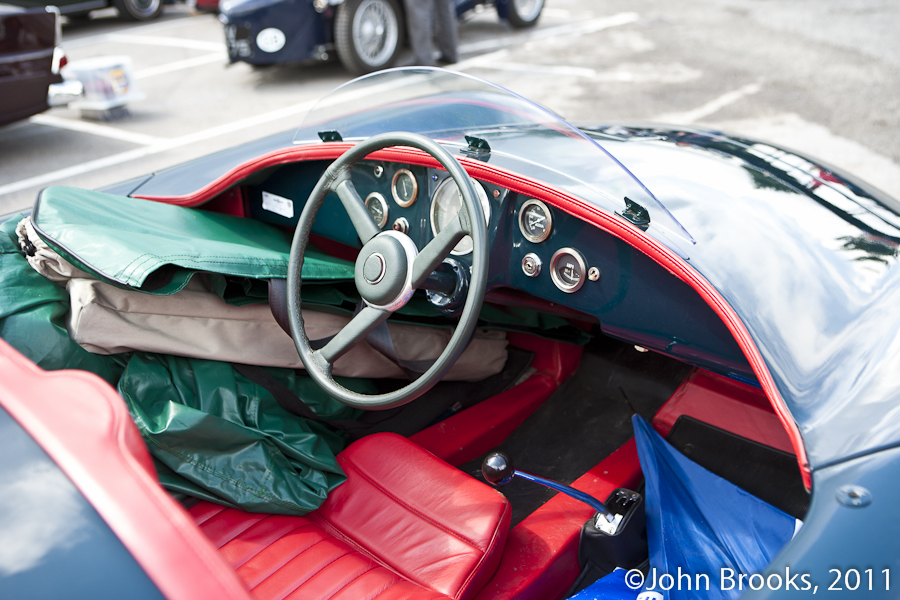
There is even a bit of James Bond, or should that be “The Spy Who Came in From the Cold” provenance attached?
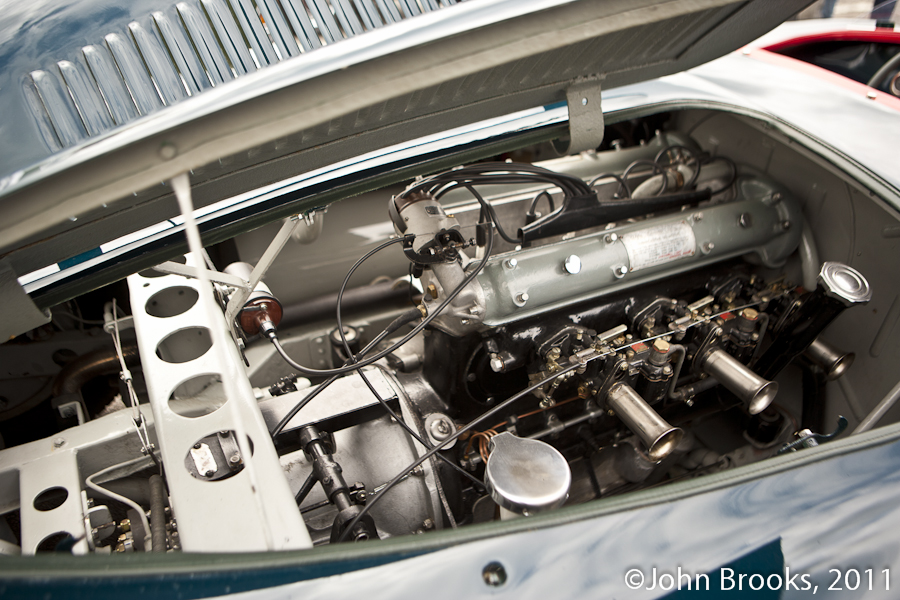
The car was ‘liberated’ from East Europe in a dramatic way, according to the story.
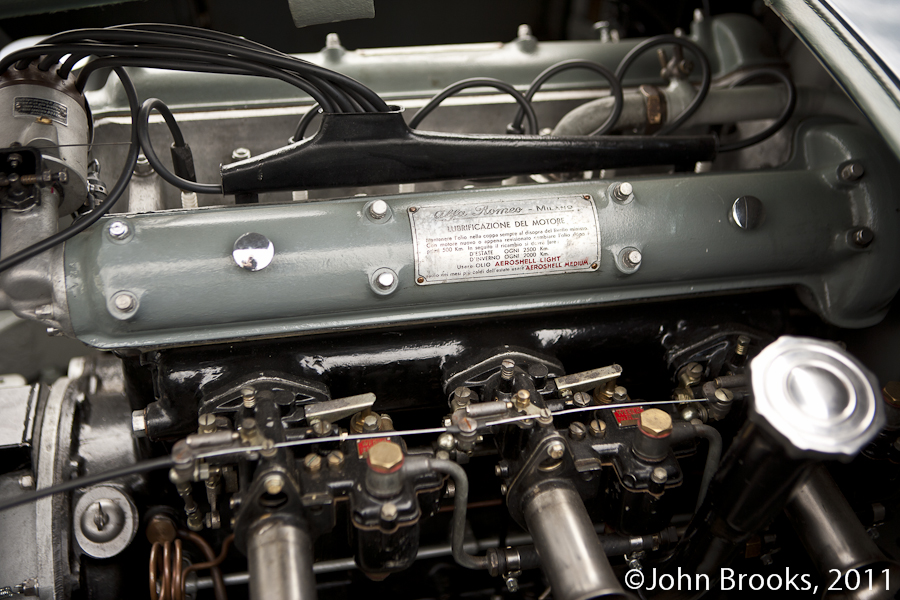
No V12.
Any public appearance of the futuristic looking Aerospider would have caused a sensation, but because of the secrecy surrounding the project, and then the onset of the war, the prototype remained hidden in the Jankovits’ garage in Fiume, and was not seen by anyone from outside the garage. On Christmas Eve 1946, Gino Jankovits drove the Aerospider at full speed under the toll-bar of the closed communist controlled border into Italy. Border guards fired volleys of shots after him, but the low, streamlined body saved Gino’s life. Only the rear tyres were destroyed by the bullets, which also caused some dents in the rear of the car’s bodywork. To get money they had to sell their car to an Anglo-American officer. Then the Alfa disappeared for about 20 years until it was rediscovered in England. In 1978 the Aerospider was recognized by the well-known Alfa Romeo historian Luigi Fusi, who had worked with Vittorio Jano at the time of the Aerospider project. He wanted to acquire the car for the Alfa Romeo Museum. The acquisition failed, but the prototype did eventually return to Italy, 30 years after its birth, to be restored at last to its original condition as a racing car.
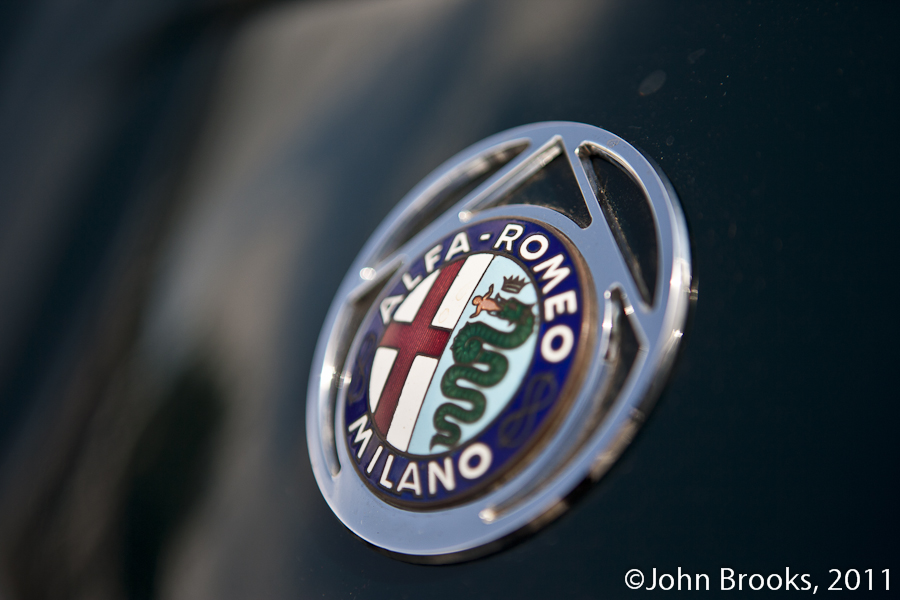
Original?
However, Alfa Romeo is a brand that inspires loyalty and enthusiasm amongst the Alfisti to a degree seldom seen by other motor manufacturers. So when a rare beast like this appears from nowhere it will attract commentary and not everyone has accepted the authorised version.
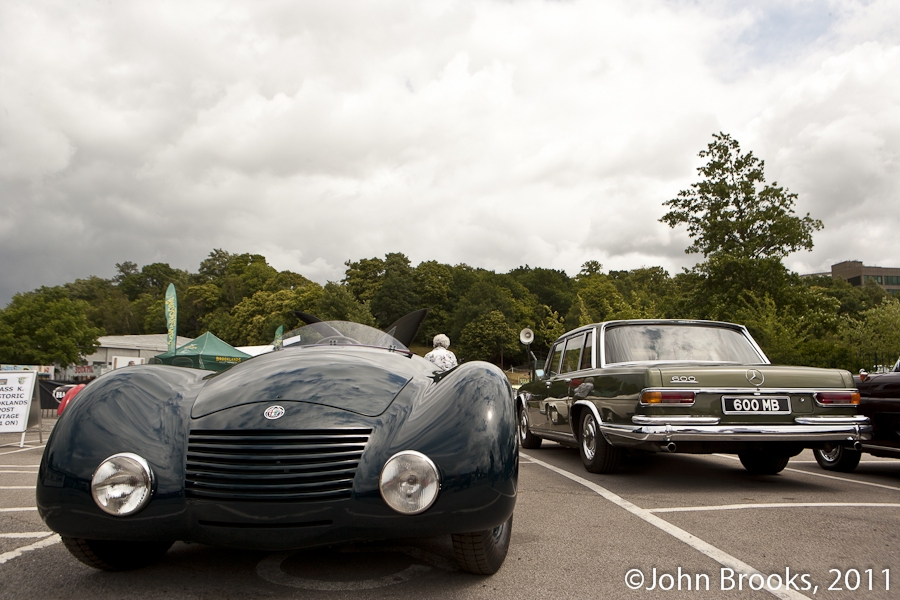
Brooklands
Indeed, when I asked my colleague, the venerable Special Correspondent what he thought, he was somewhat dismissive. He backed up this opinion by later confirming that the car was not in the Alfa Romeo bible ‘Alfa Romeo Tutte le Vetture Dal 1910’ by Luigi Fusi. That confirmed it, as far as he is concerned, that this car is not an Alfa Romeo. Others have written blogs about this vehicle, one can be found HERE that eloquently puts the case for the prosecution.
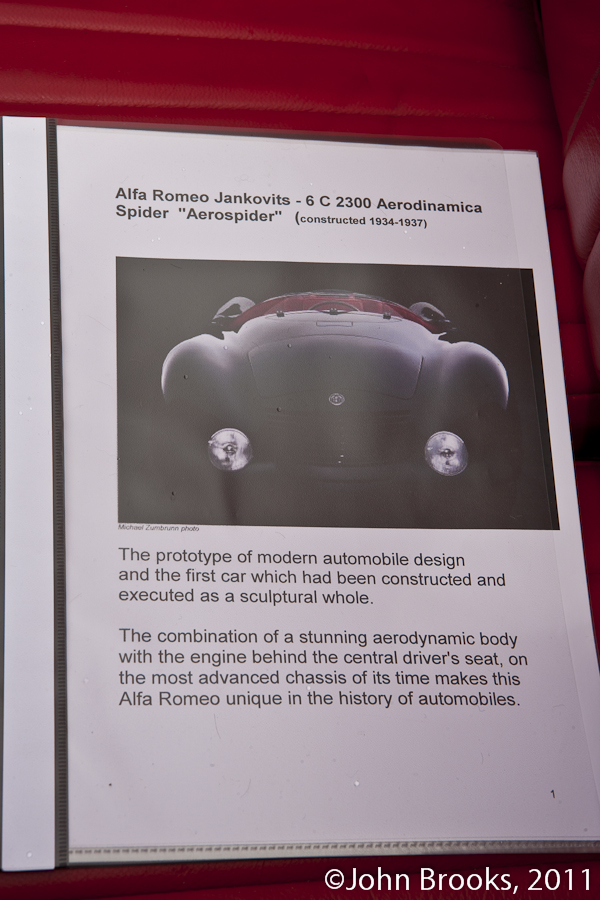
Proof?
Another comment that was published, “Respected antique dealer Colin Crabbe was told by Luigi Fusi of the Alfa Romeo Museum that the Jankowits car is not an Alfa Romeo, what ever the current owner seems to think, none the less it is an extremely interesting Alfa Romeo powered special, stories of the car dodging bullets to escape communist Yugoslavia are comically wide of the mark, the car and its occupants were allowed to leave the Yugoslavia with a perfectly normal travel permit, it was never designed for anything other than a straight 6, Alfa V12’s did not exist at the time the car was conceived by the Jankowits Brothers.”
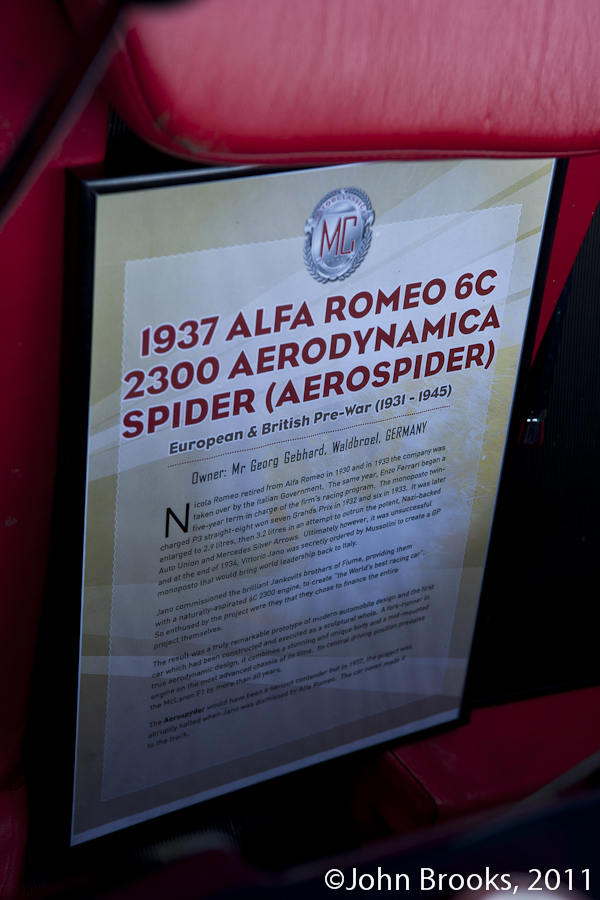
More Proof?
Still, there are those who maintain that this story is true. The car has been exhibited at Goodwood’s Festival of Speed and, of course, Brooklands, giving some credibility to that version of events. Being less of a purist than those like the Special Correspondent, I am inclined to enjoy that car for what it is and am glad that we are able to see it today.
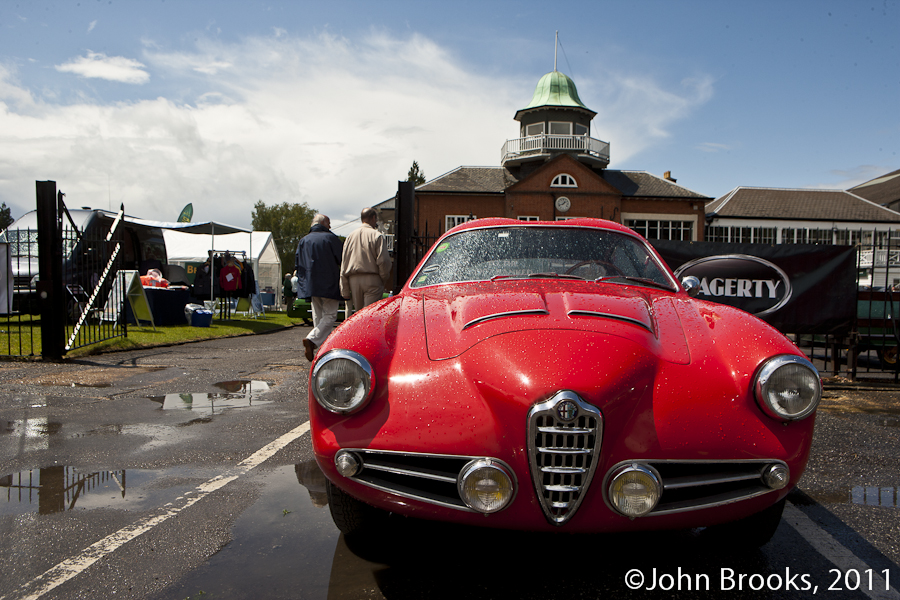
Alfa Romeo 1900C SS Zagato Coupe
One car that attracts only enthusiasm is the Alfa Romeo 1900C SS Zagato Coupe. Even the rain storm that hit the event that day could not dim the glow from the car.
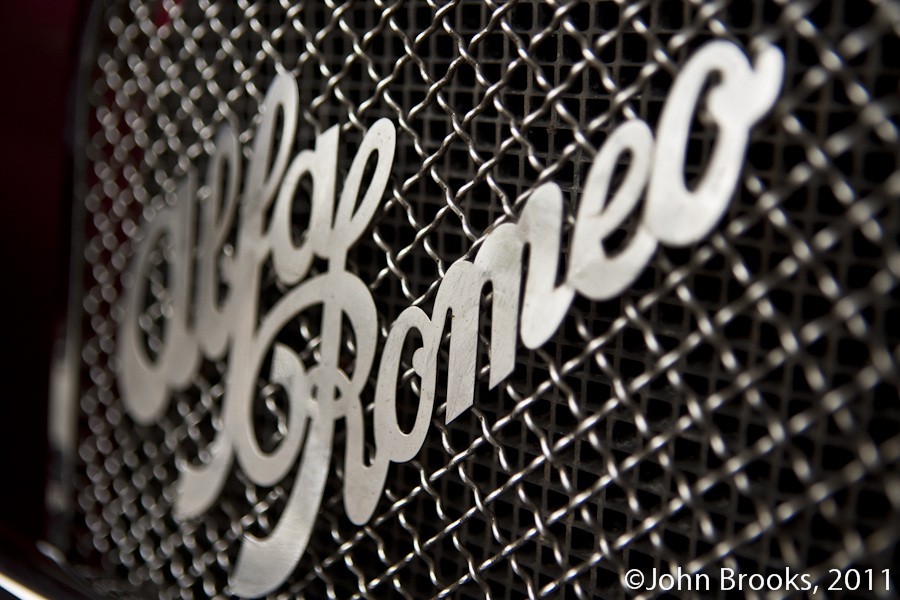
Name Check
A fitting way to end this salute to Alfa magic on display at Brooklands last month.
John Brooks, July 2011

